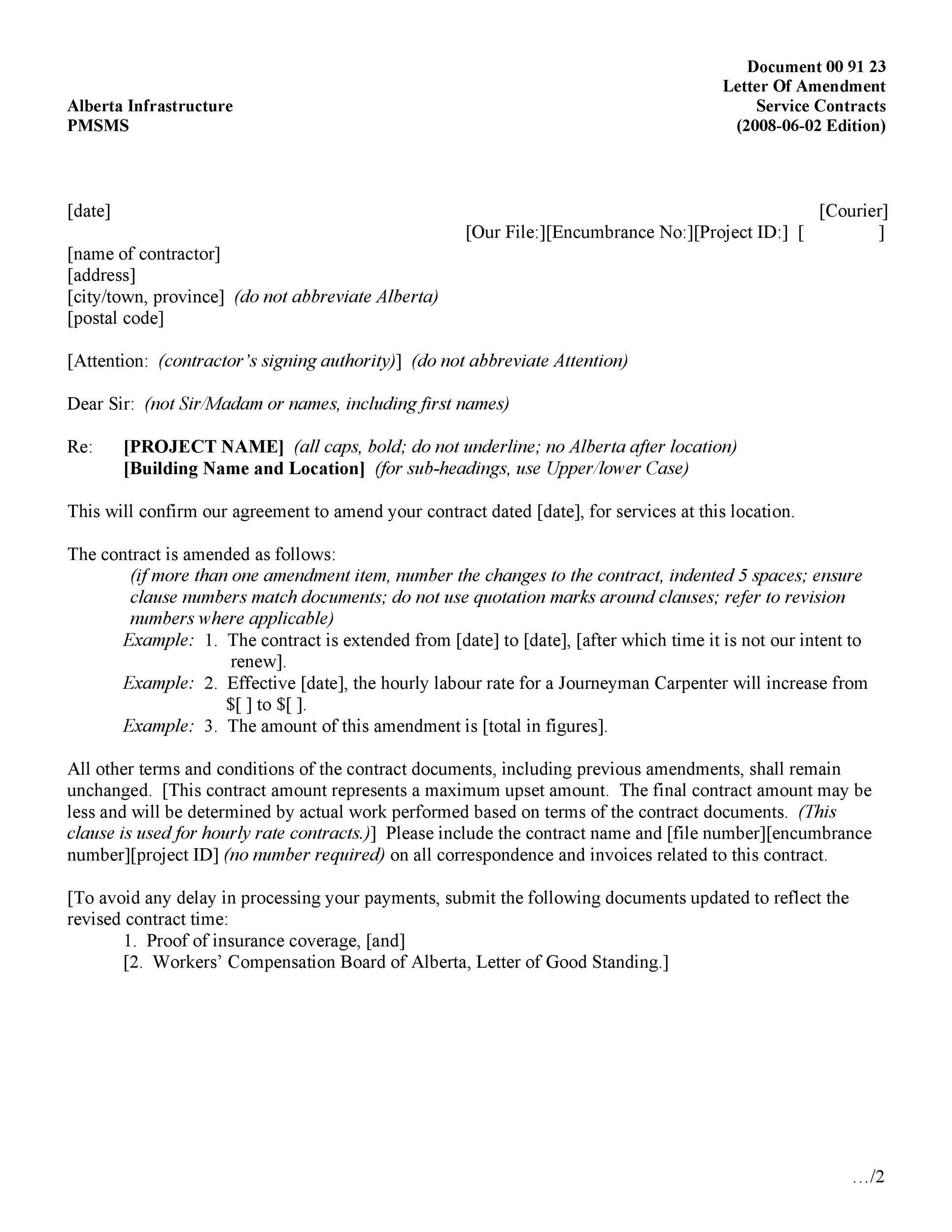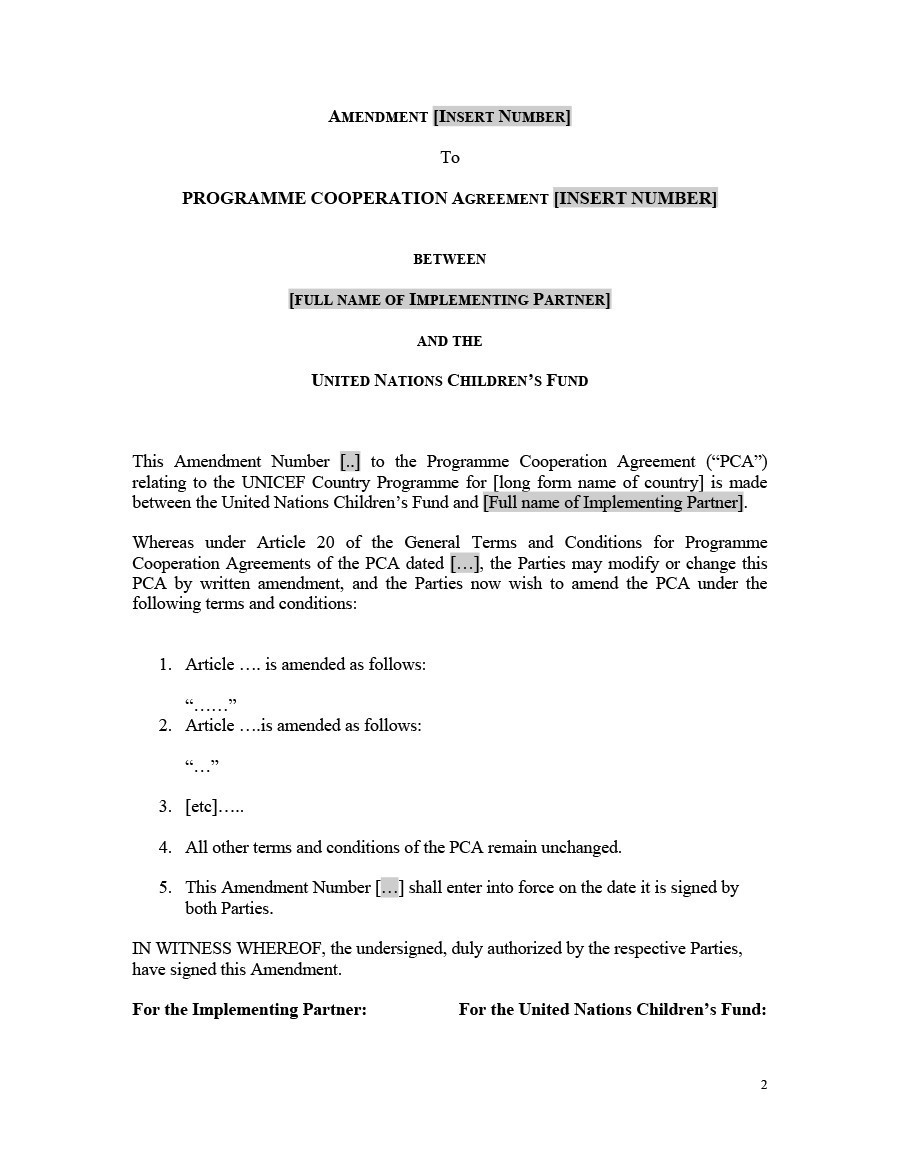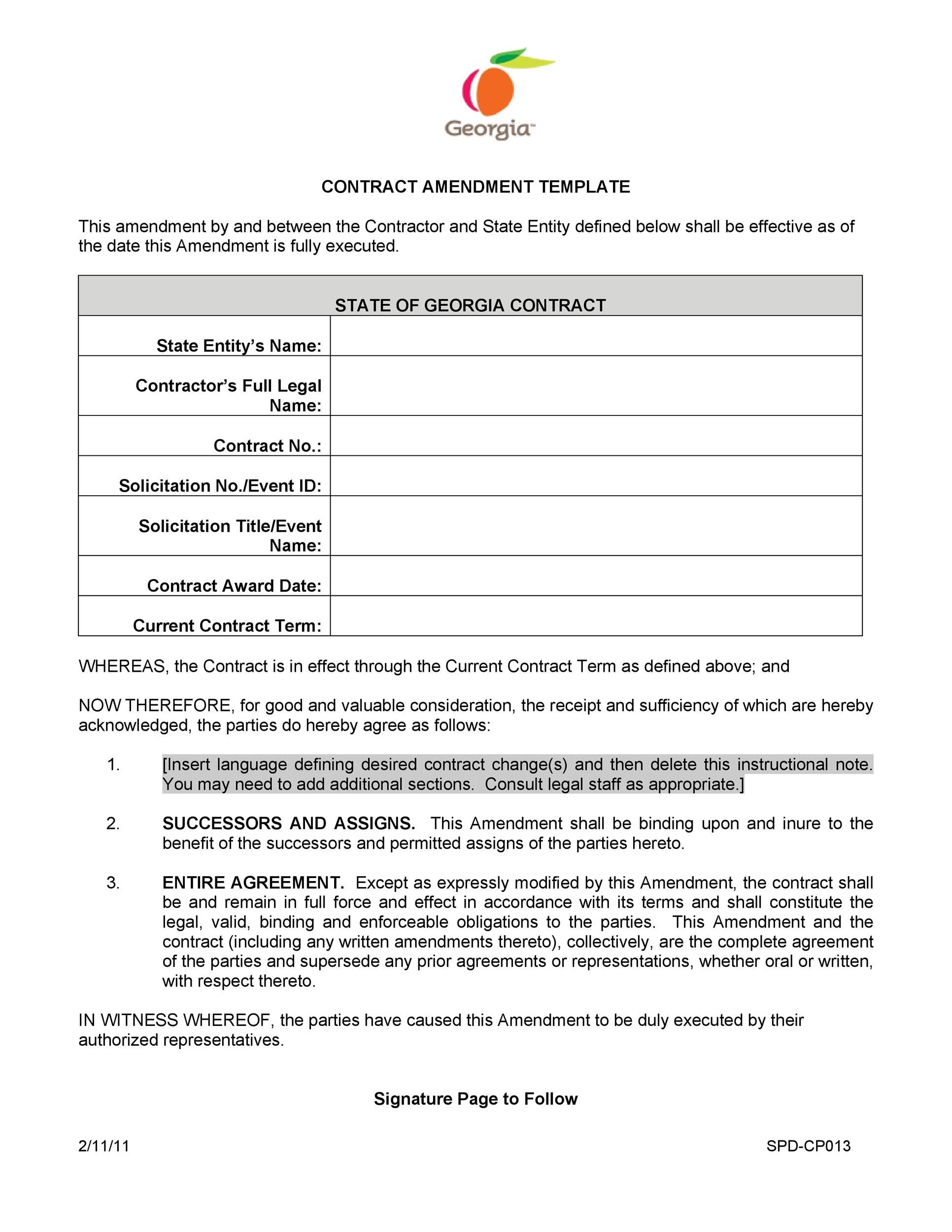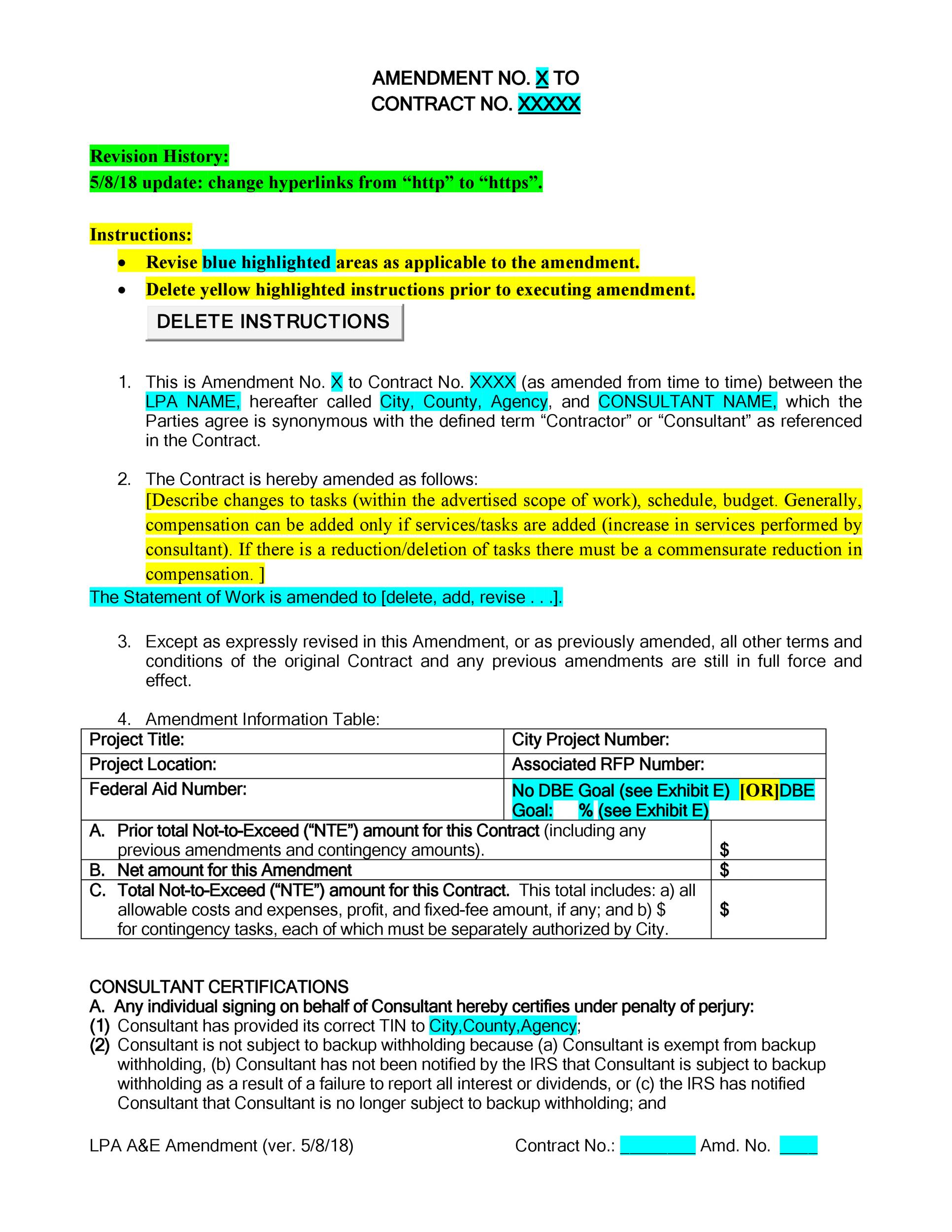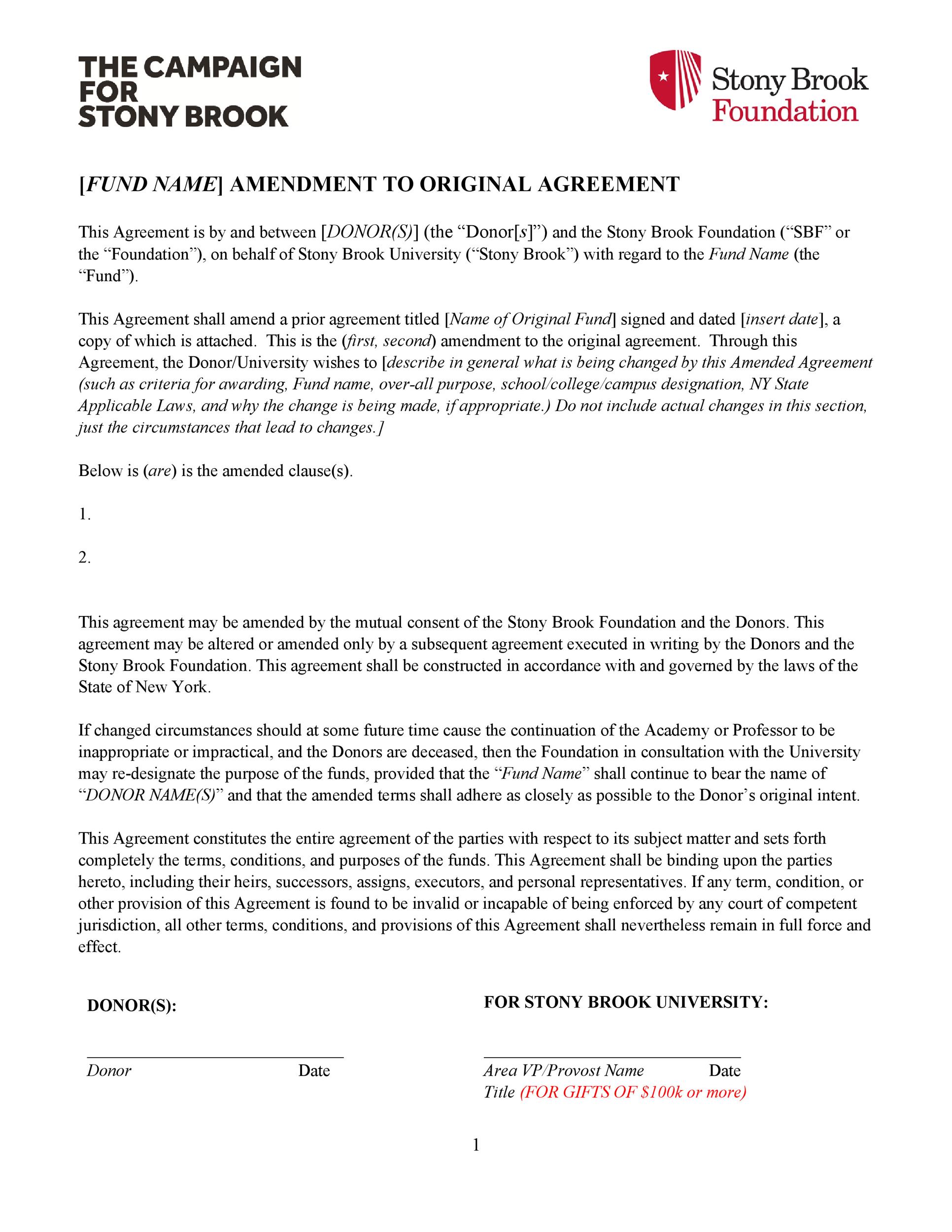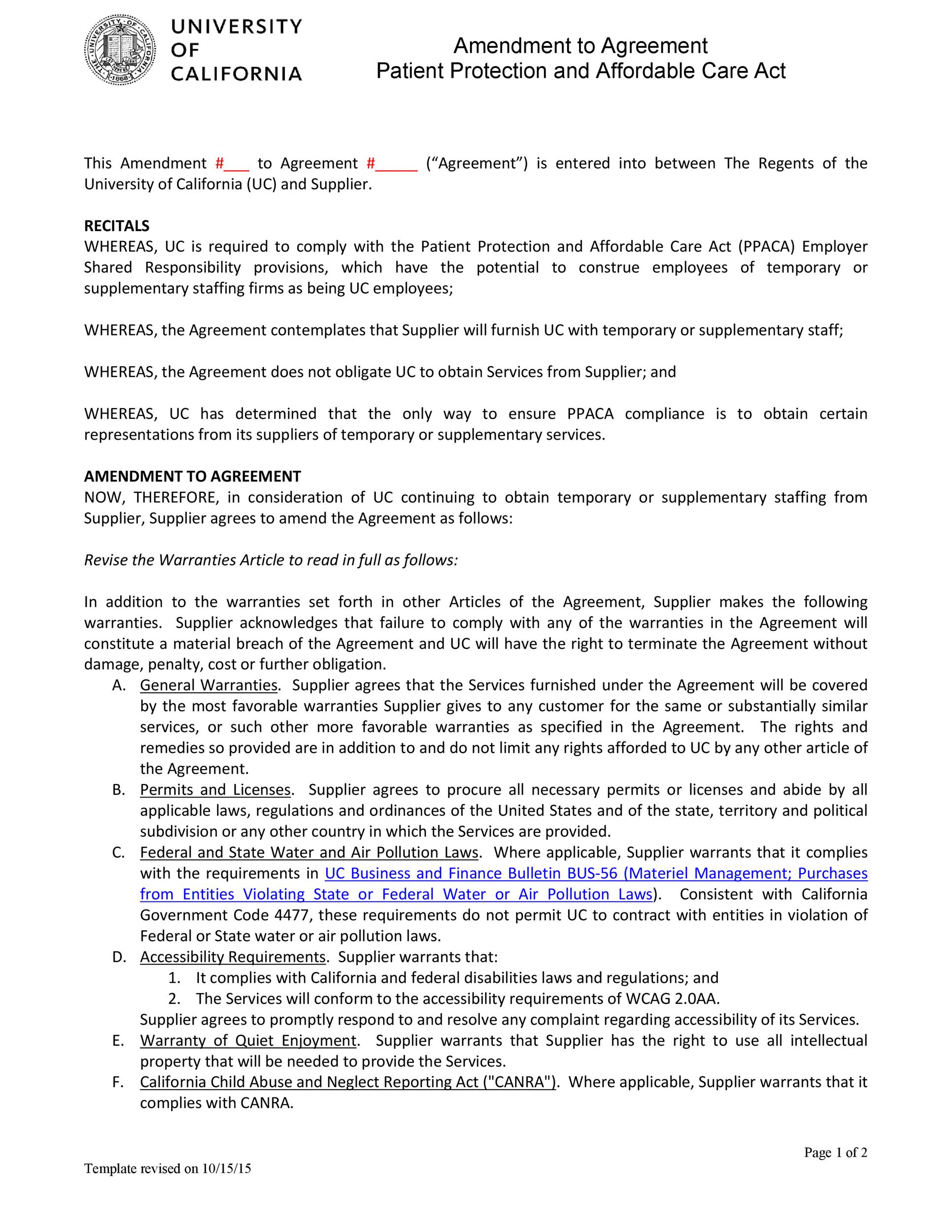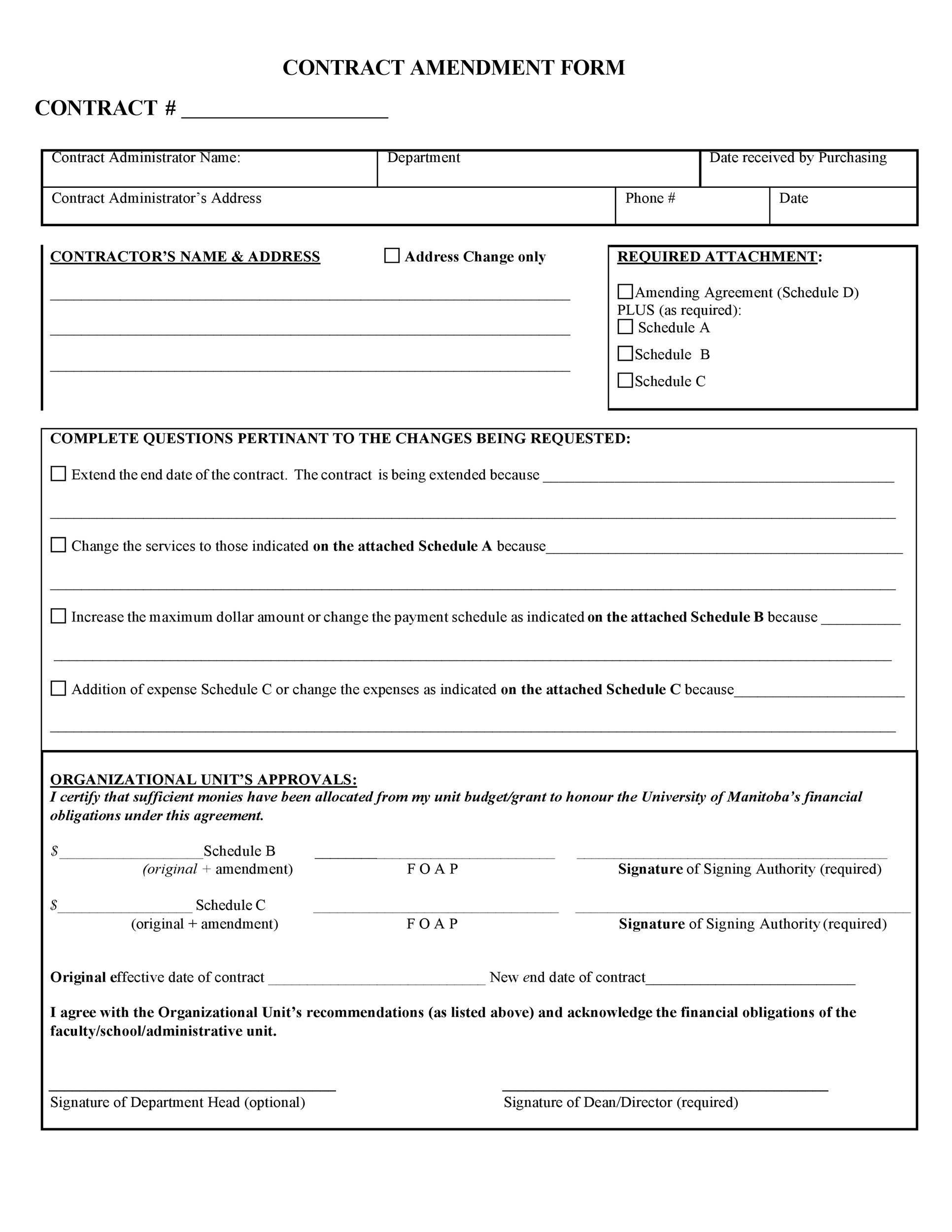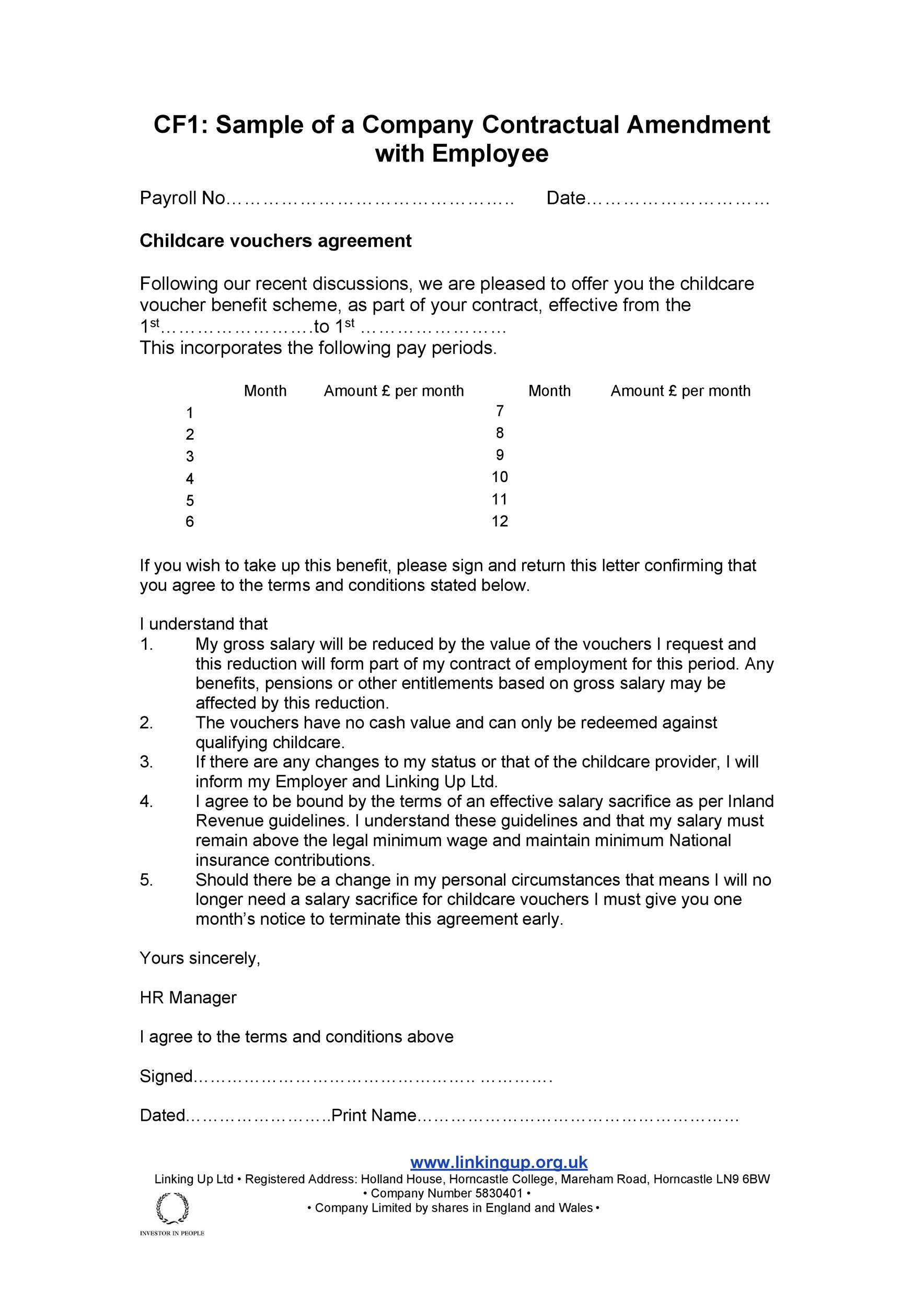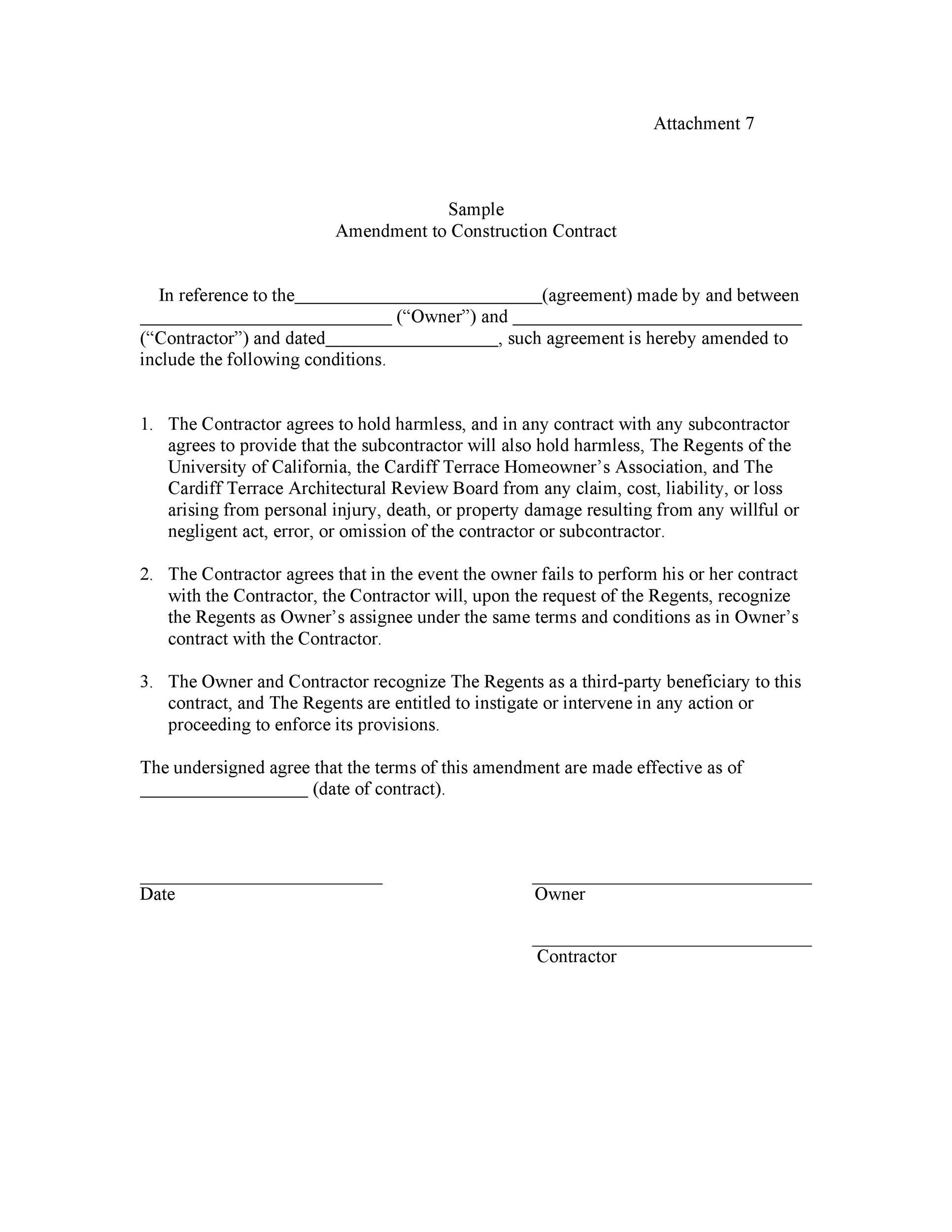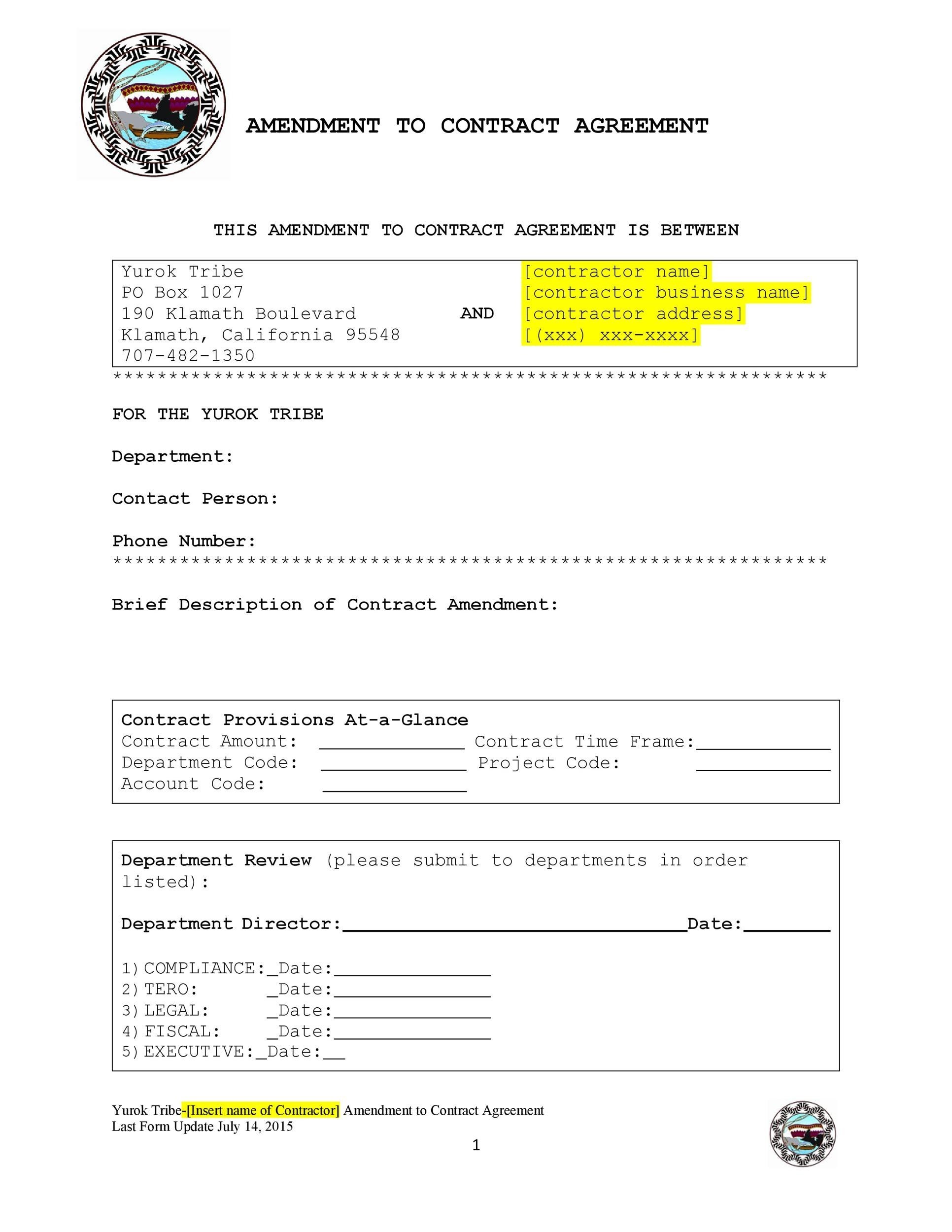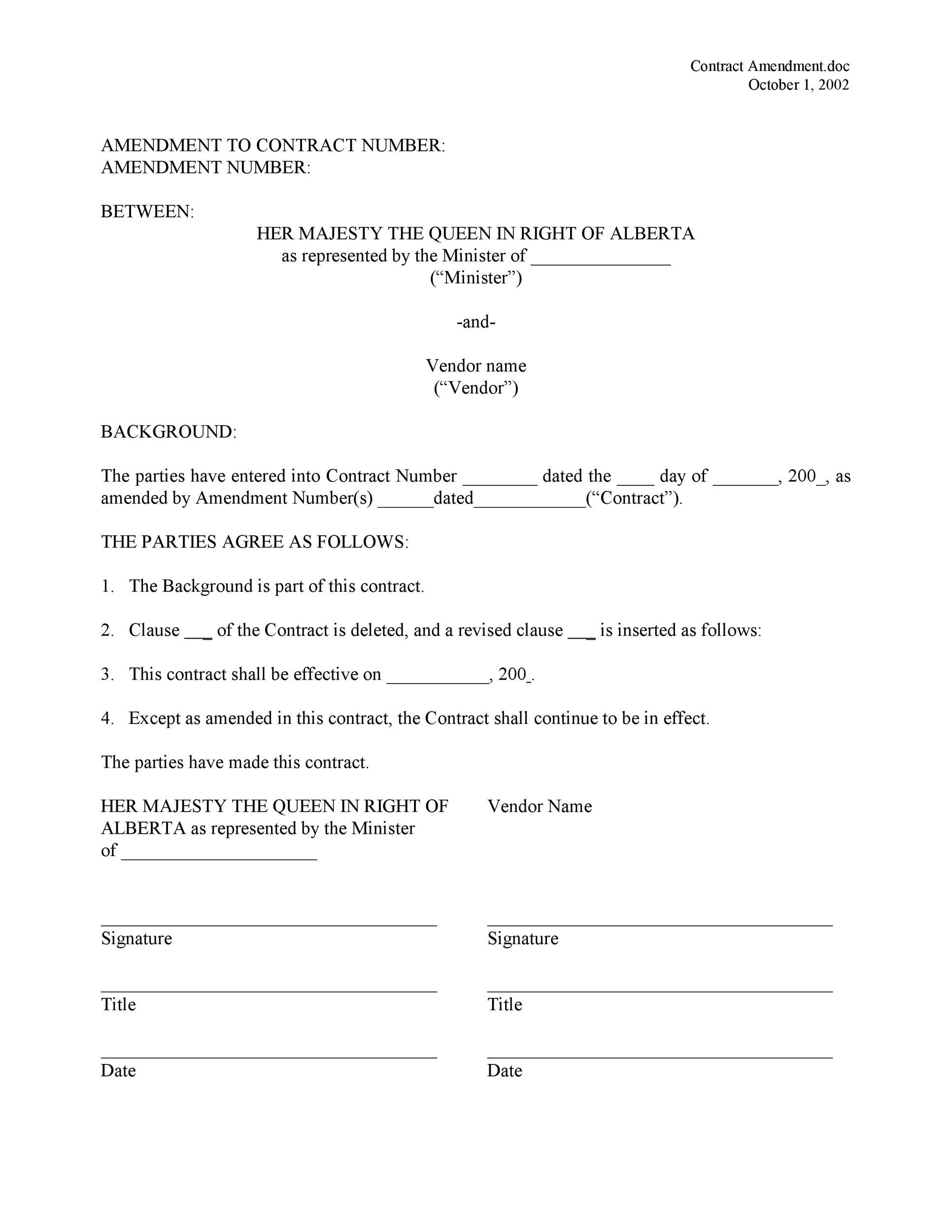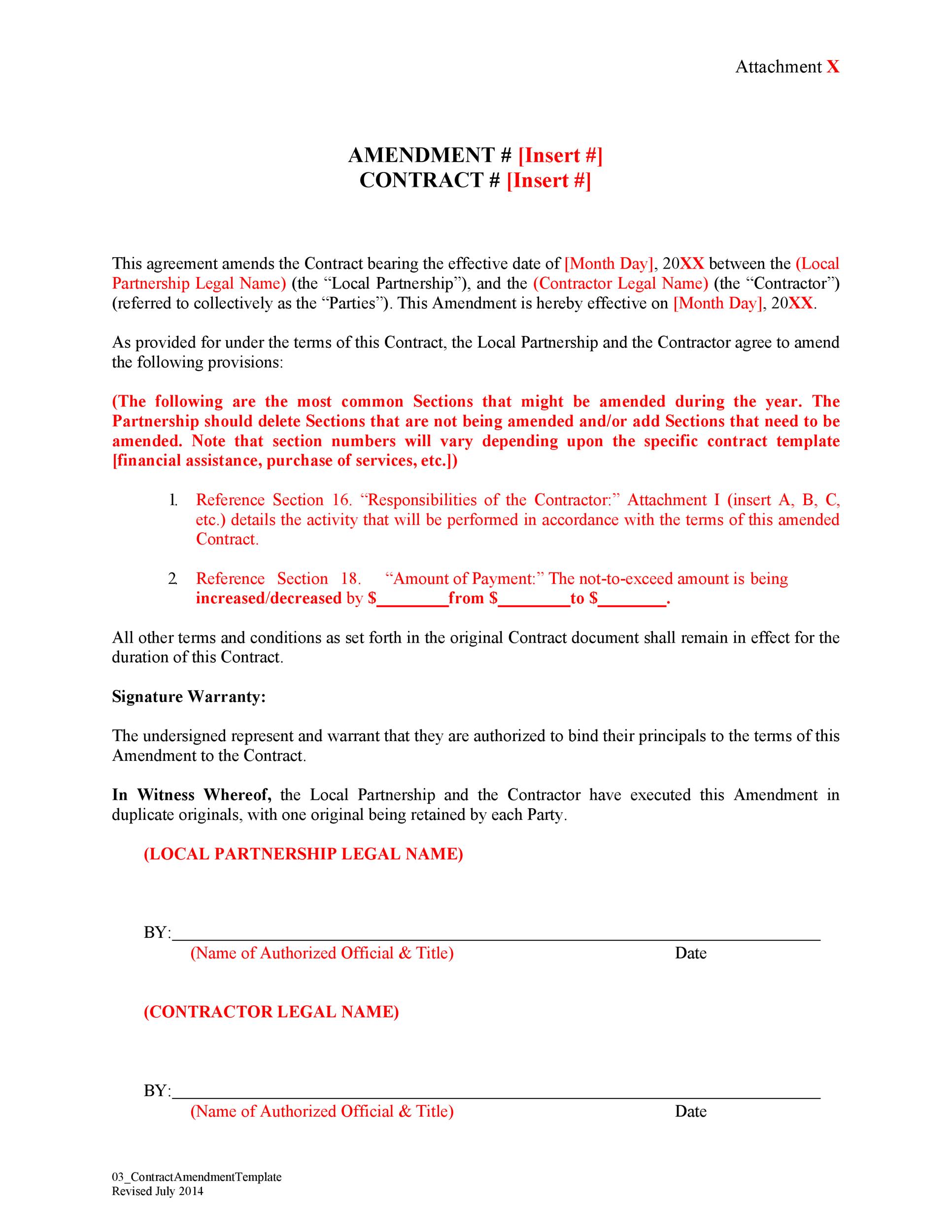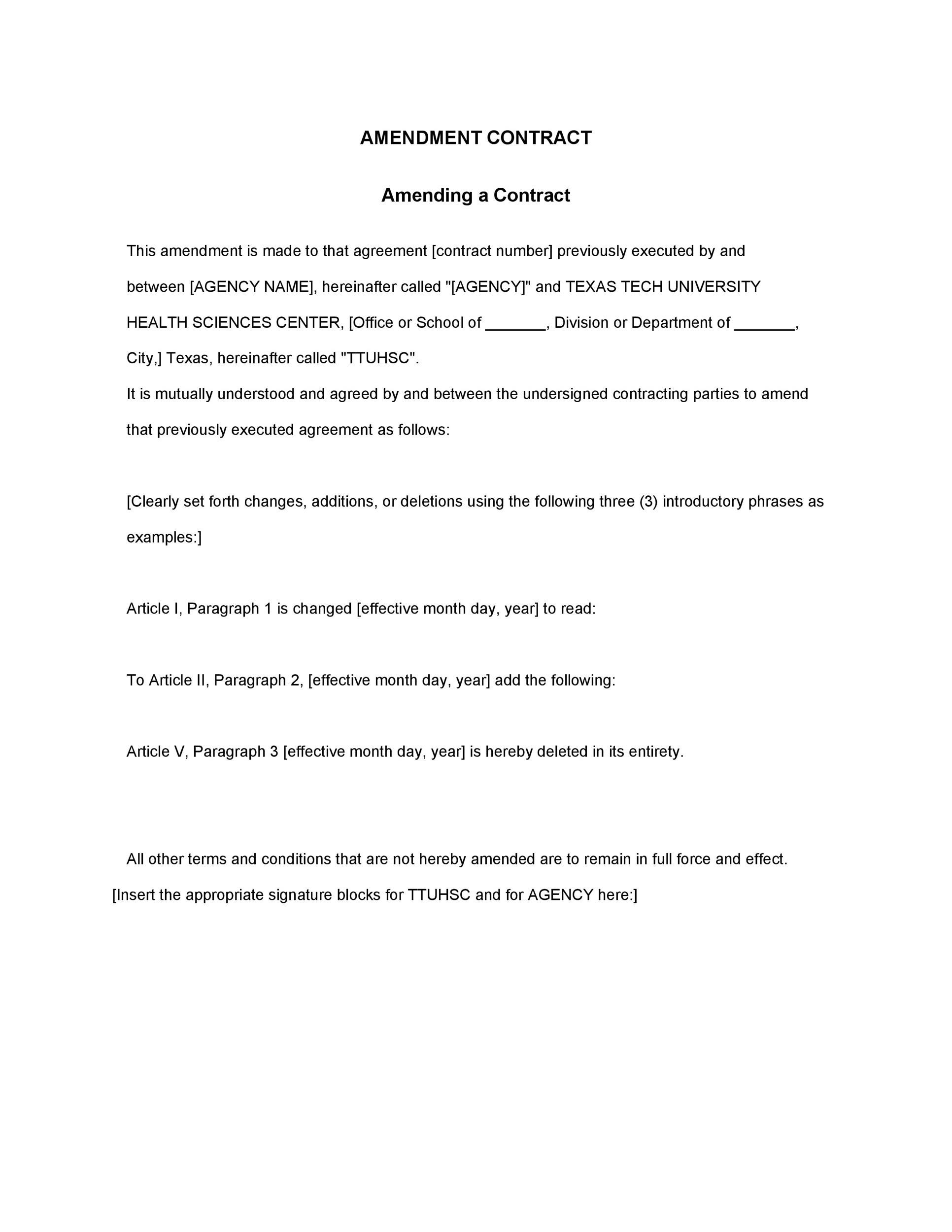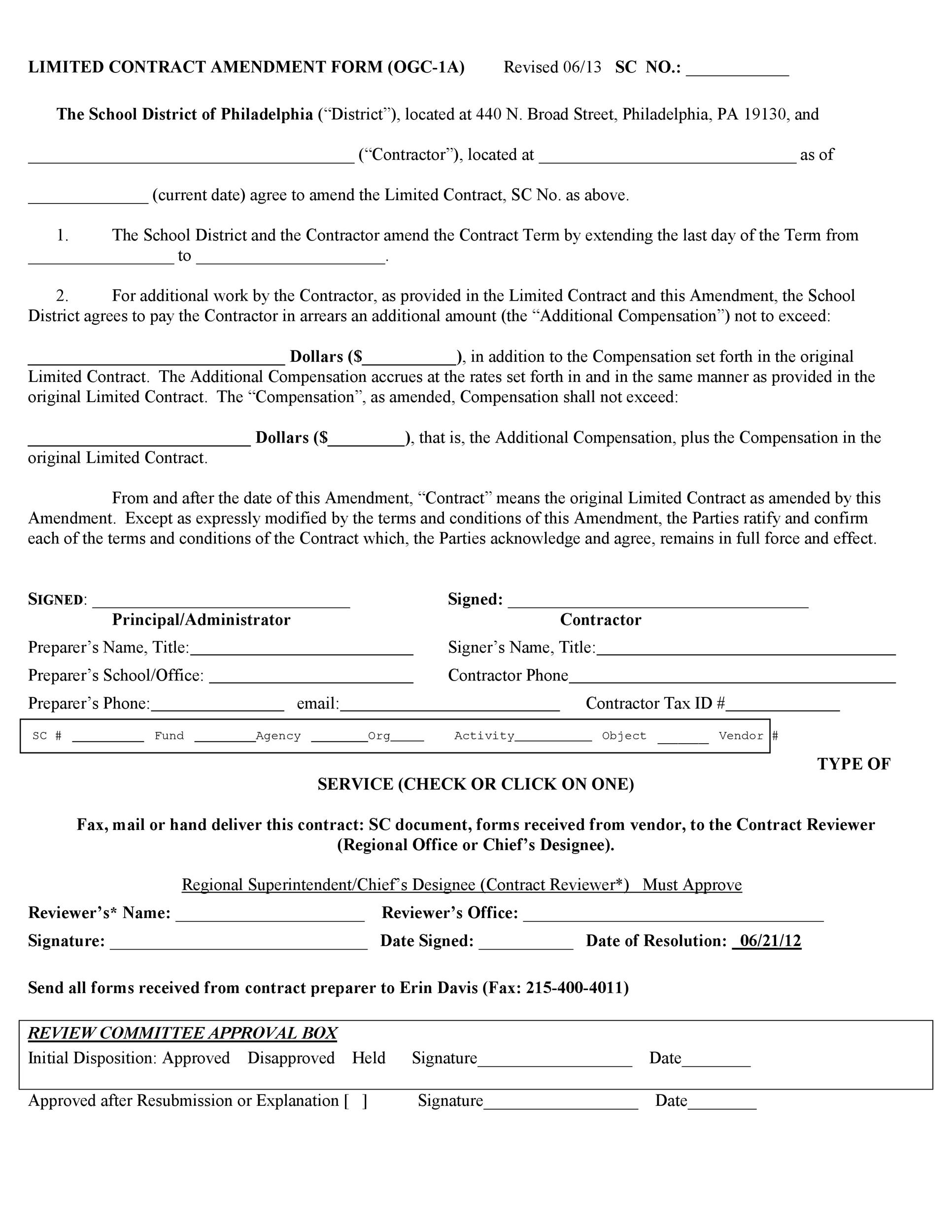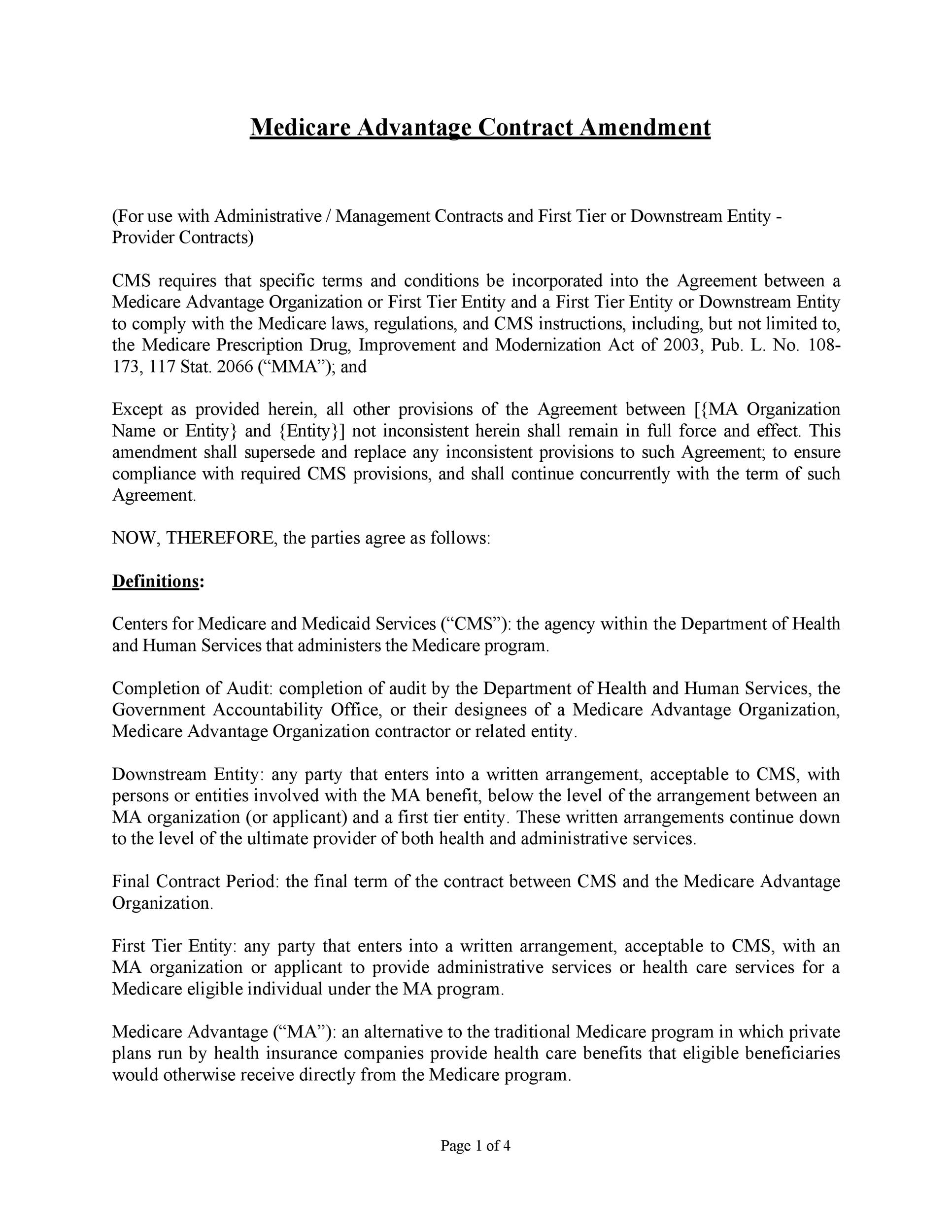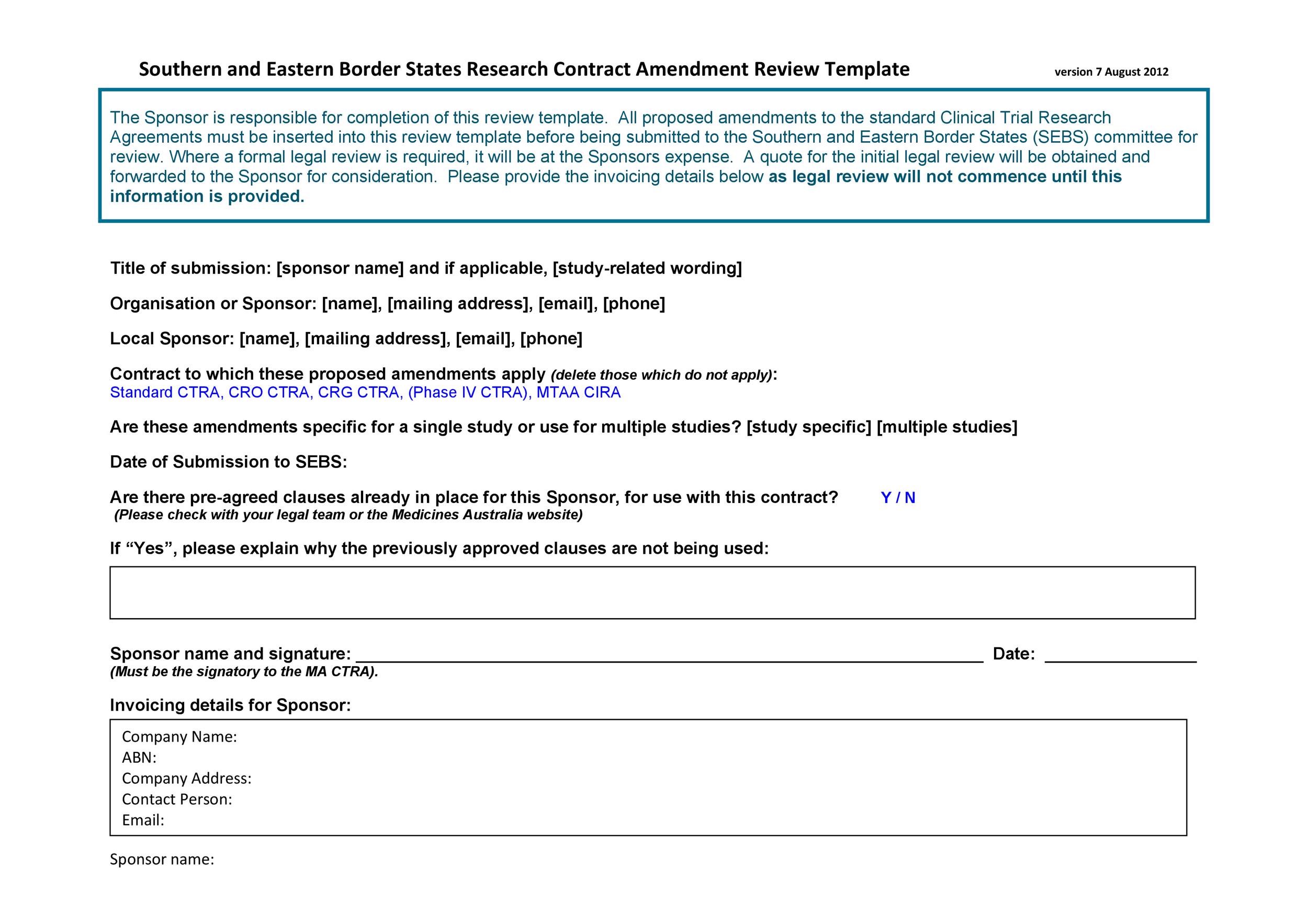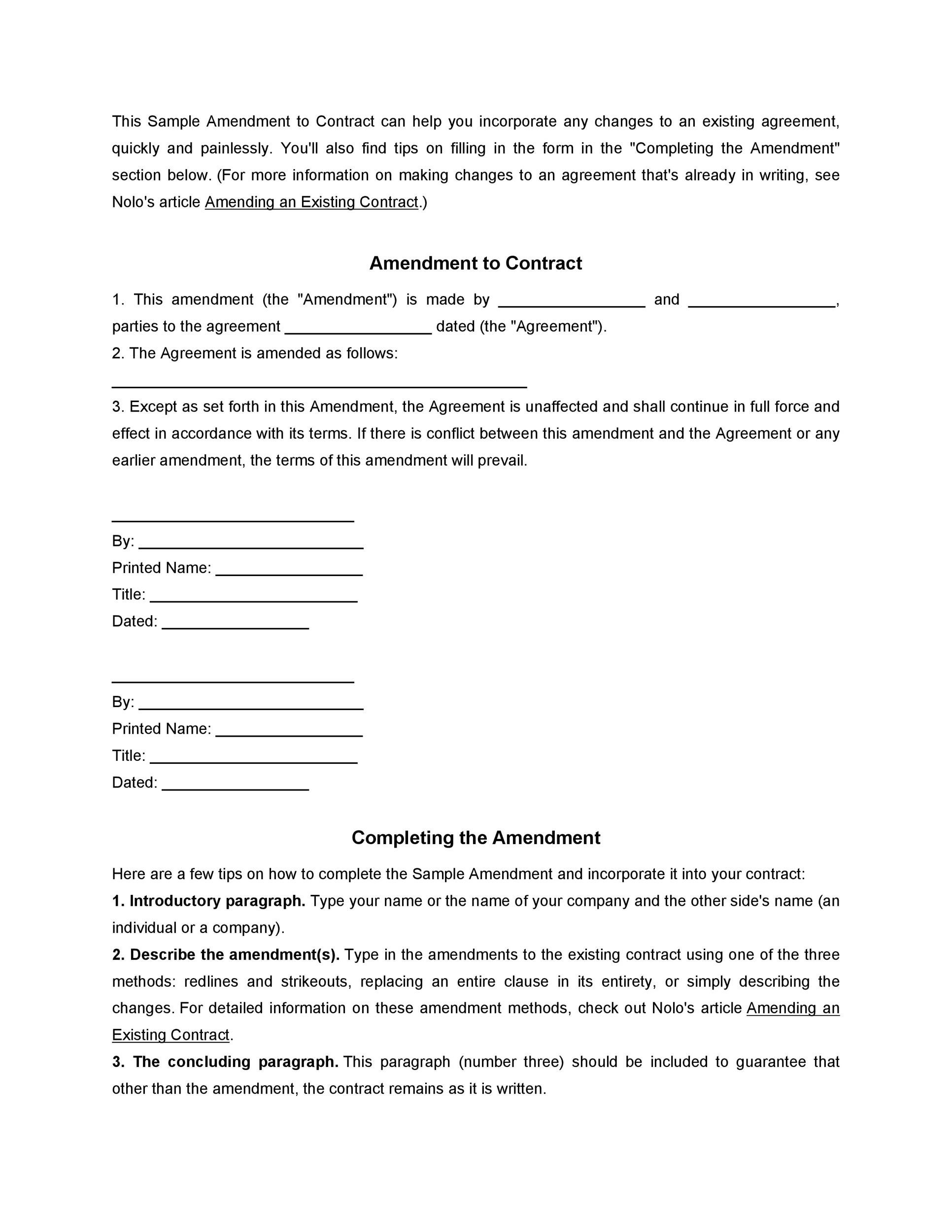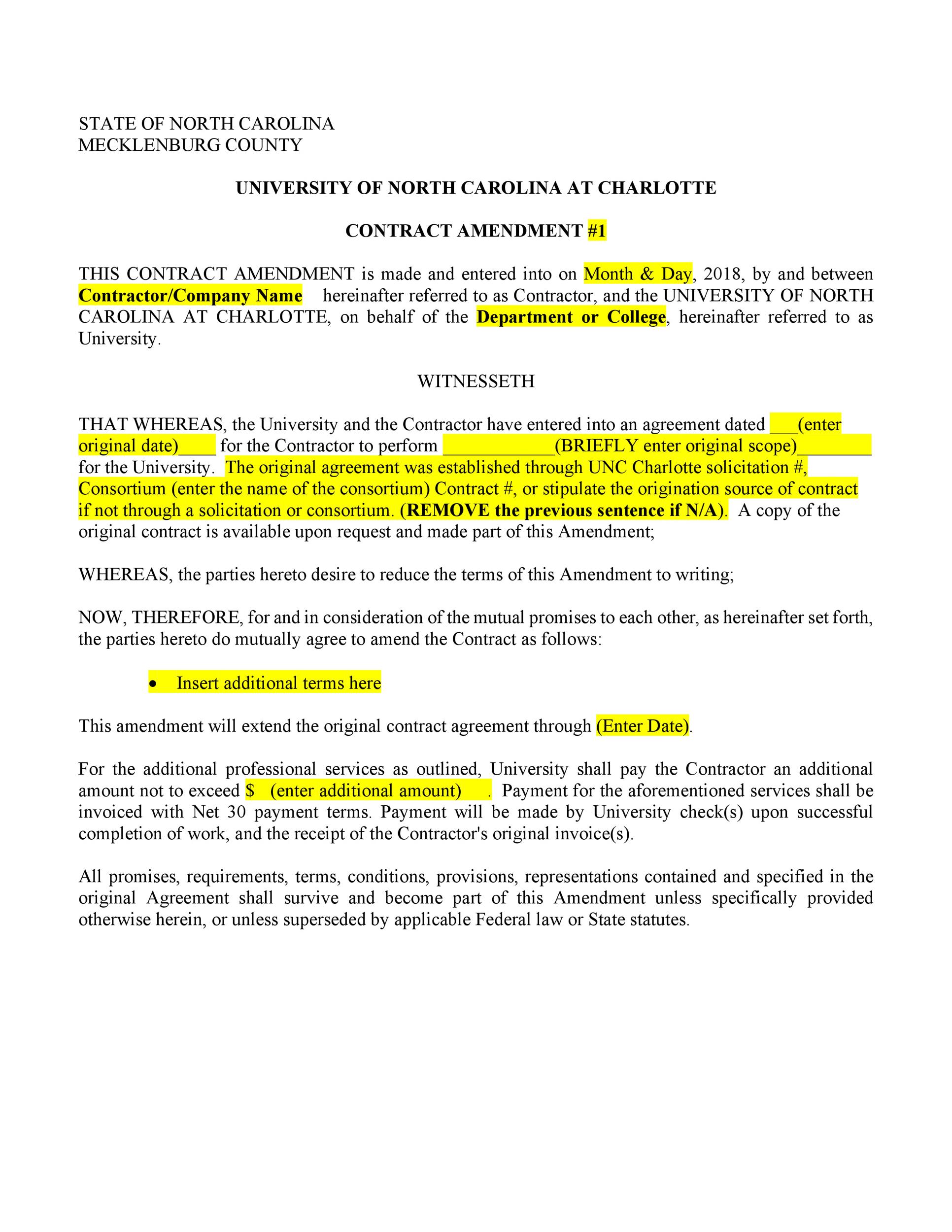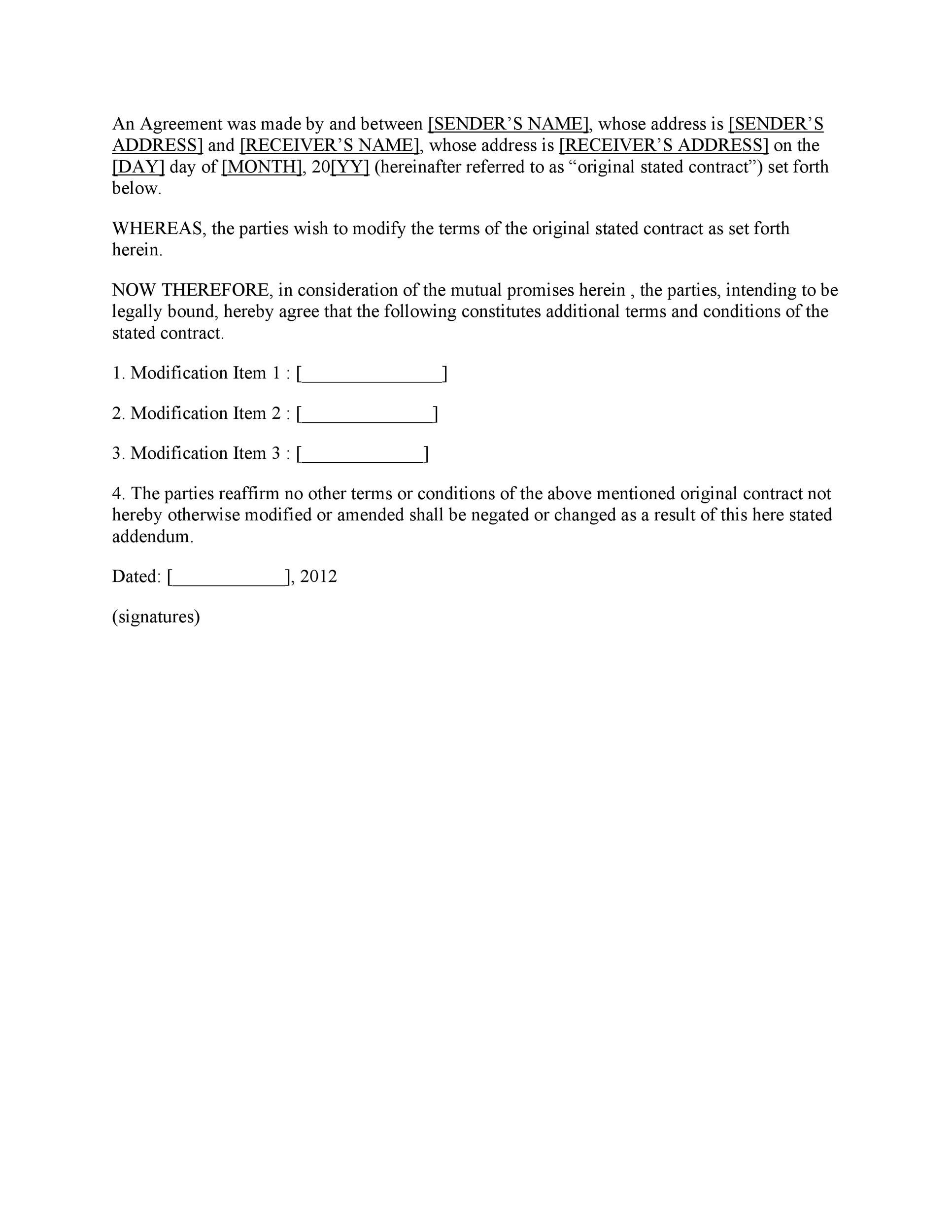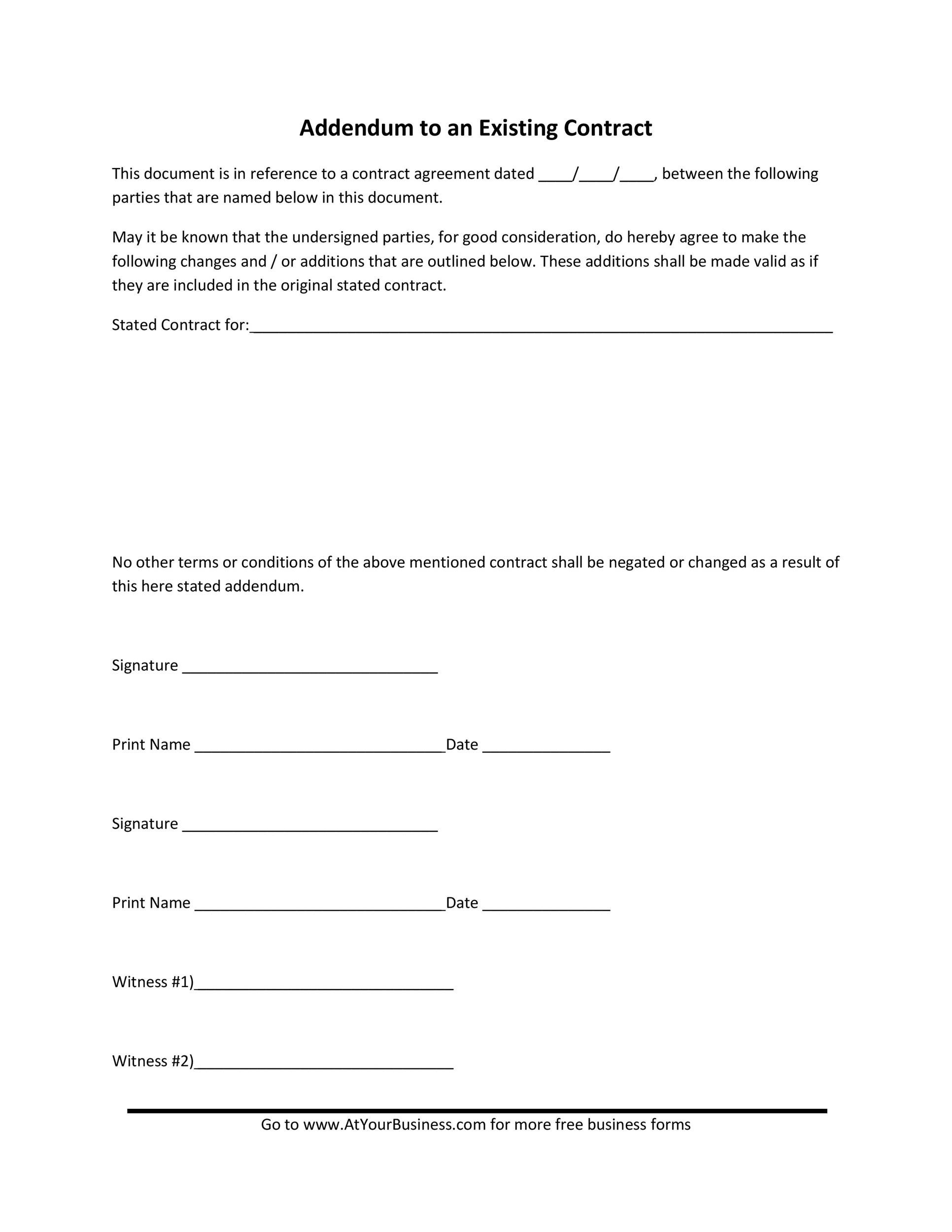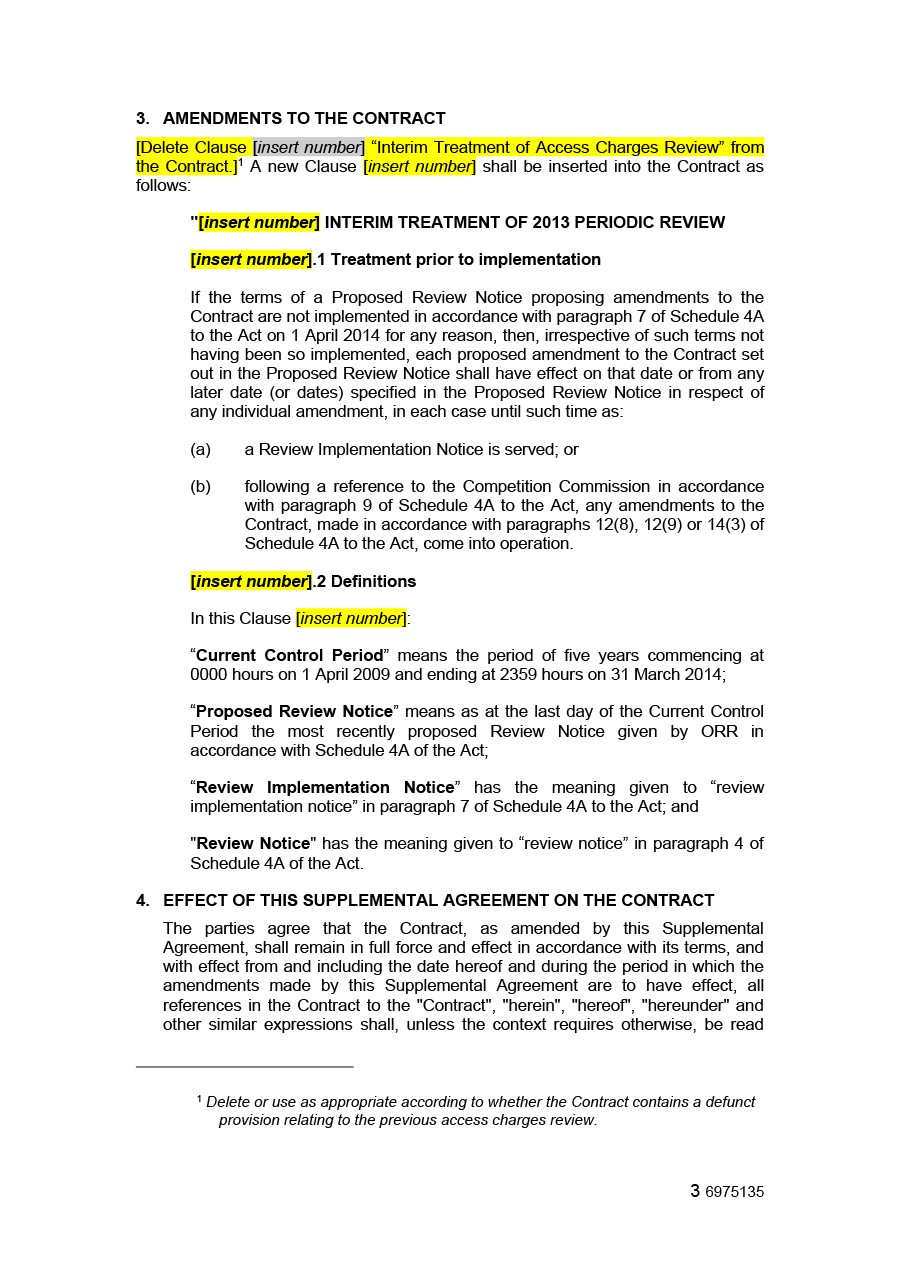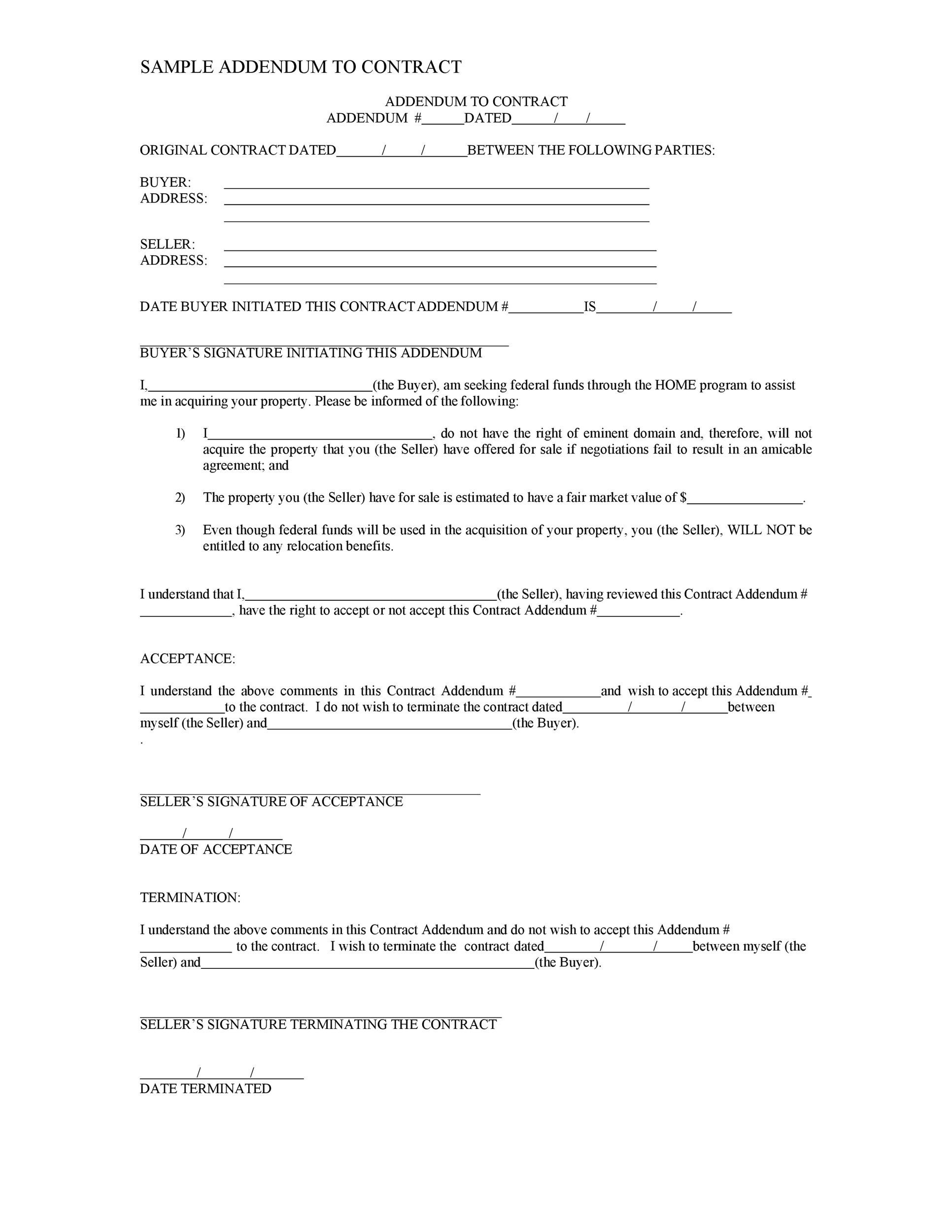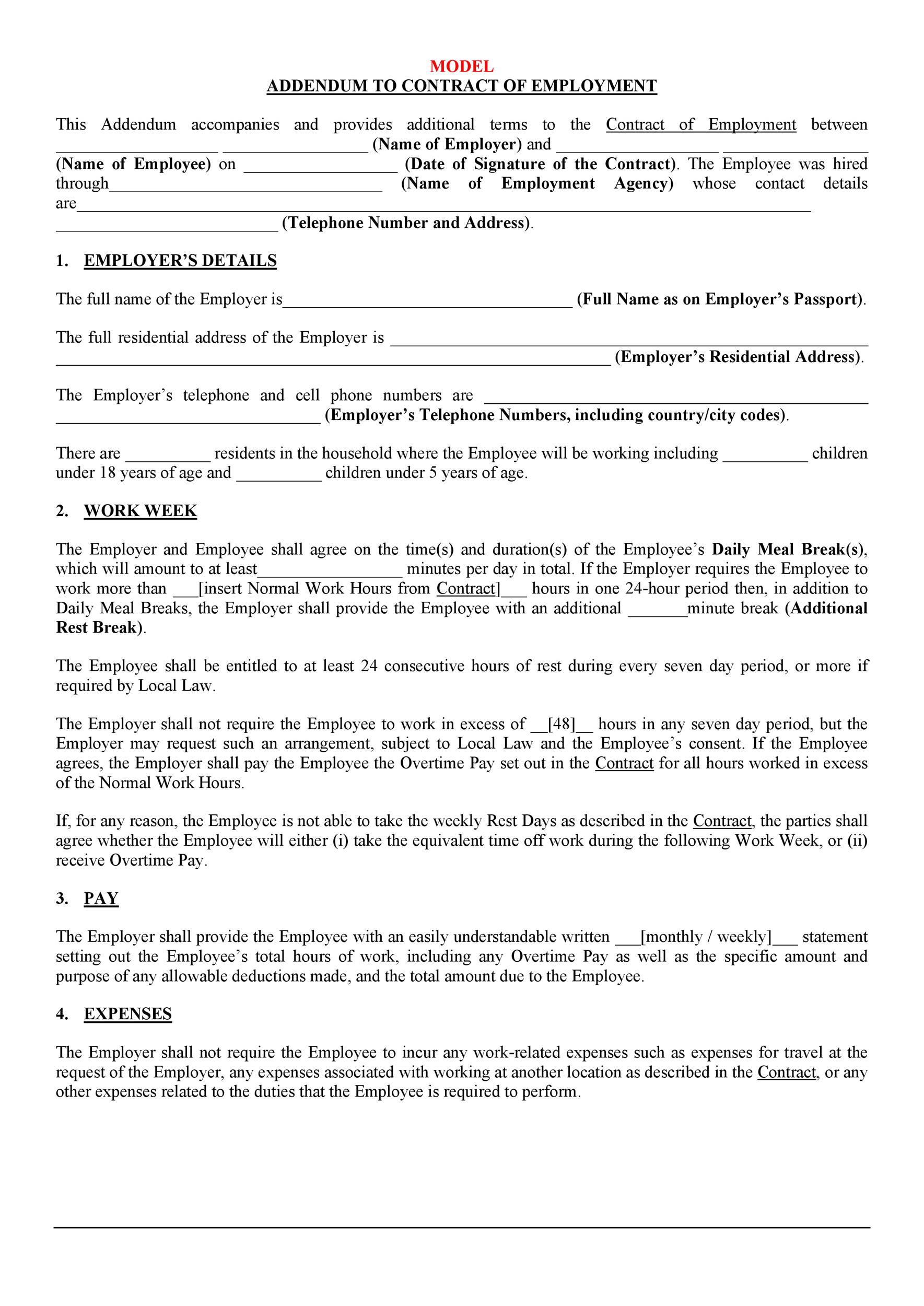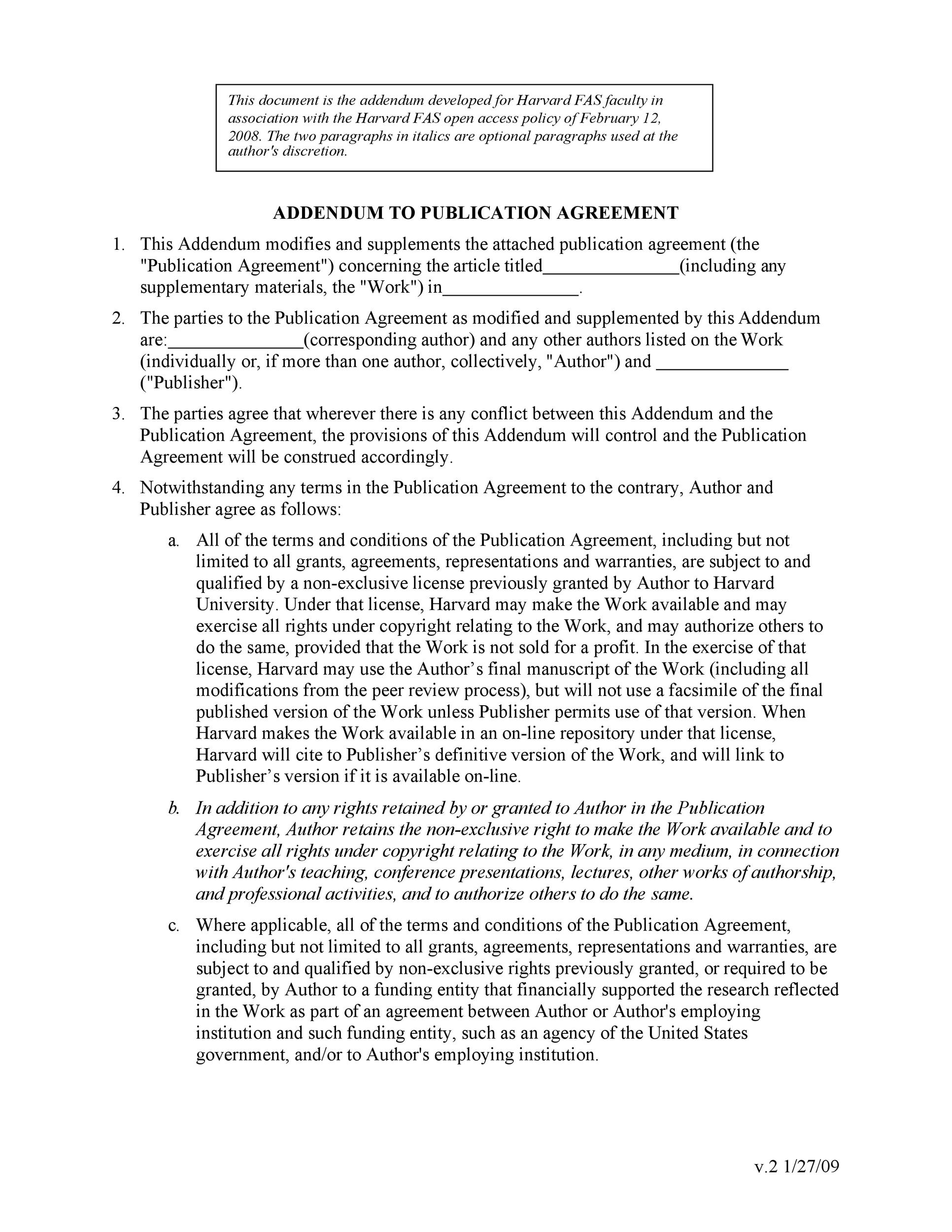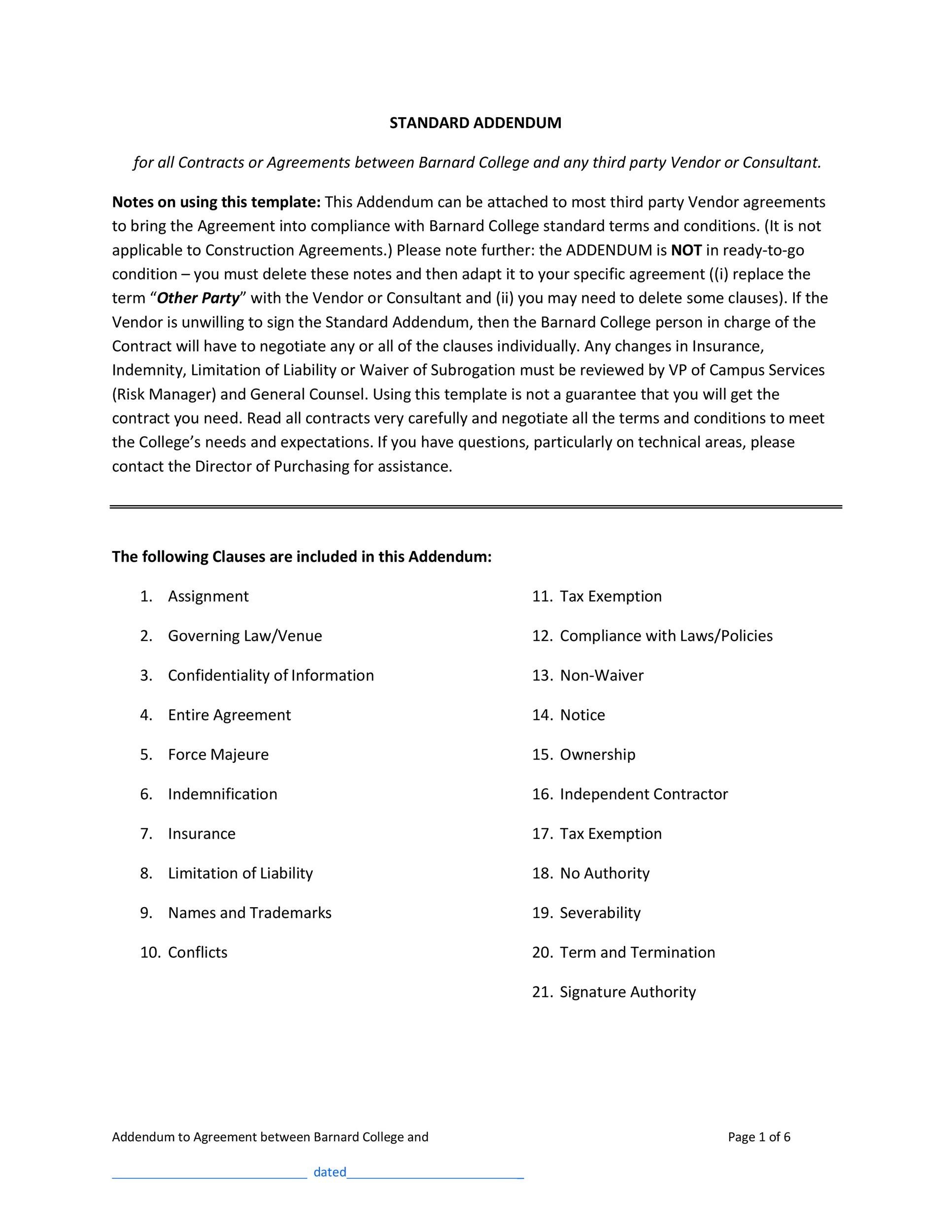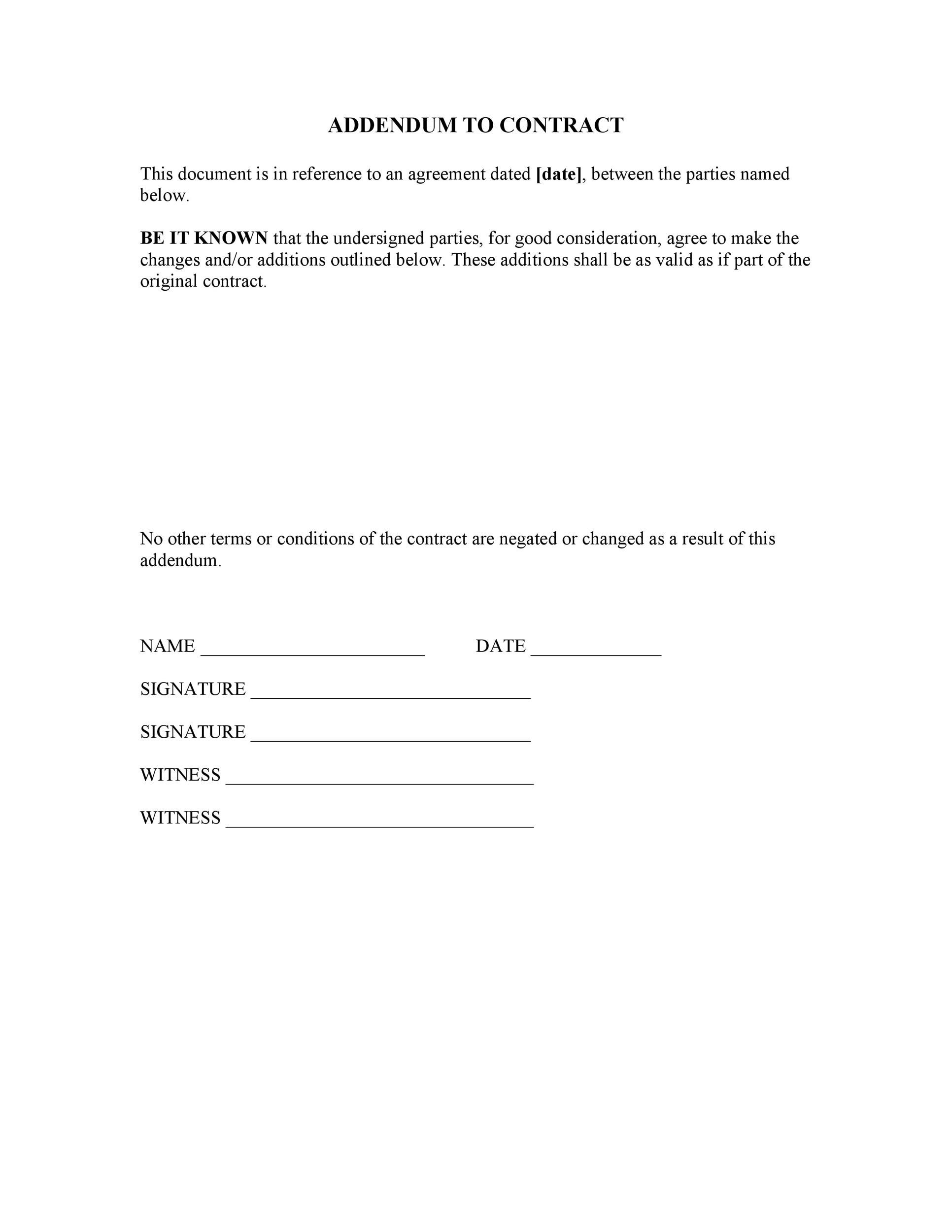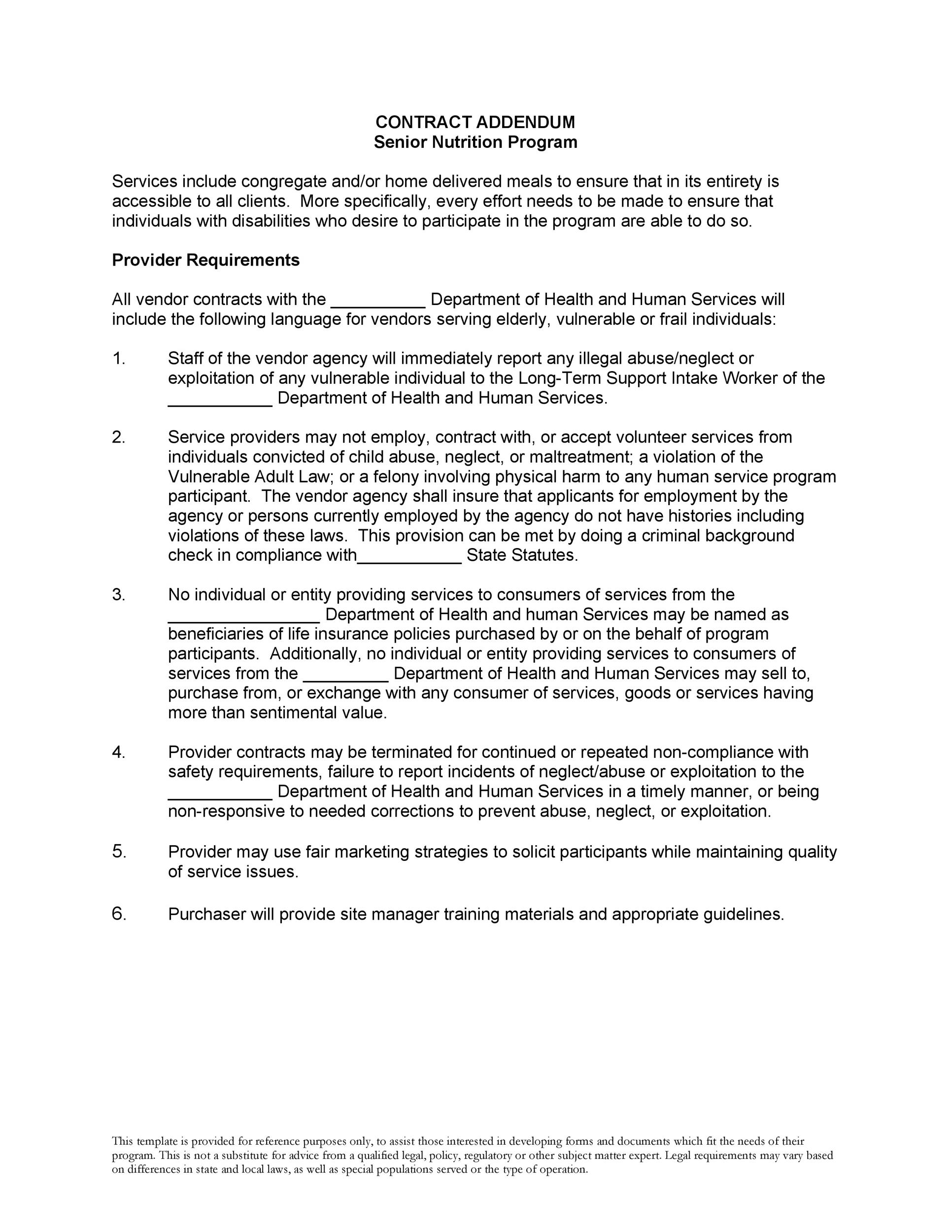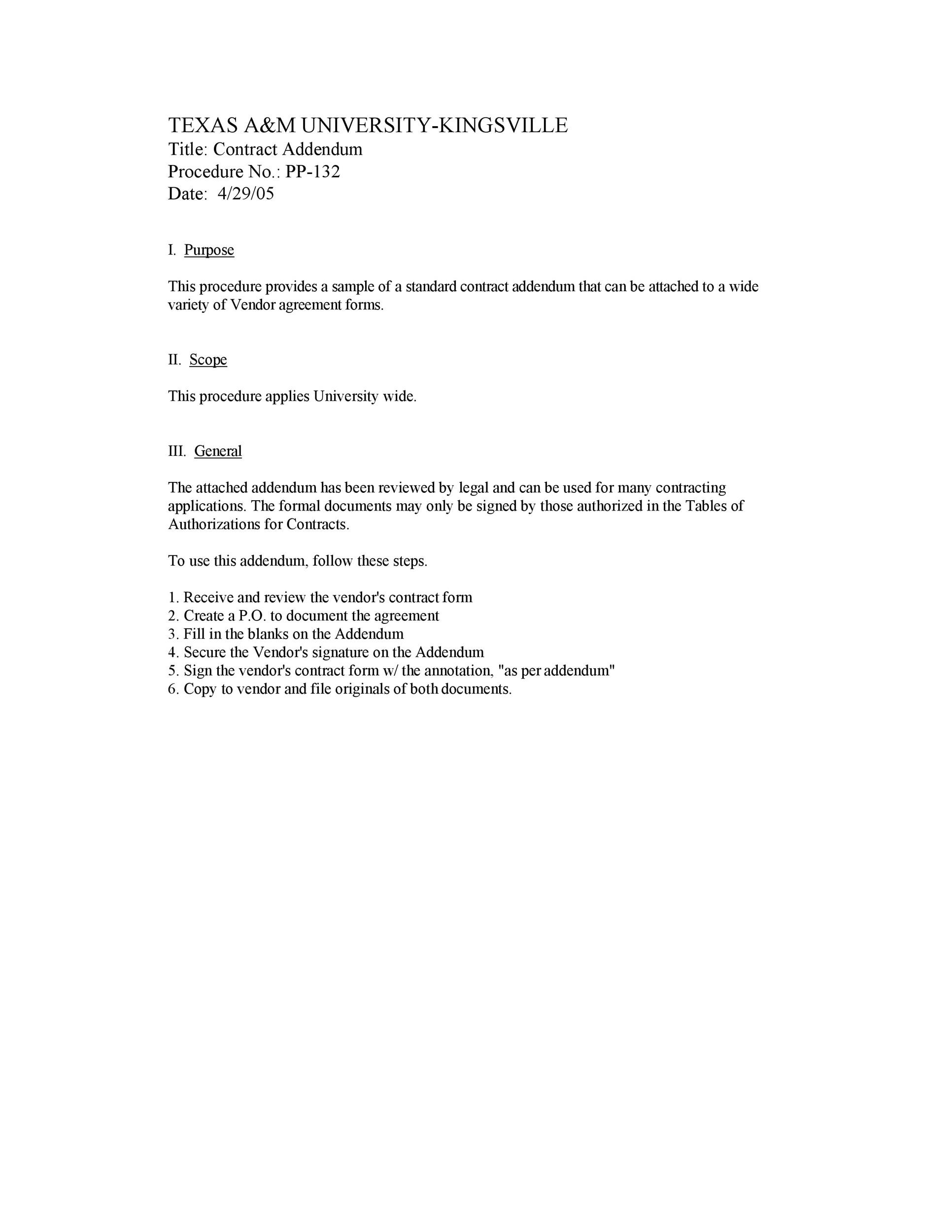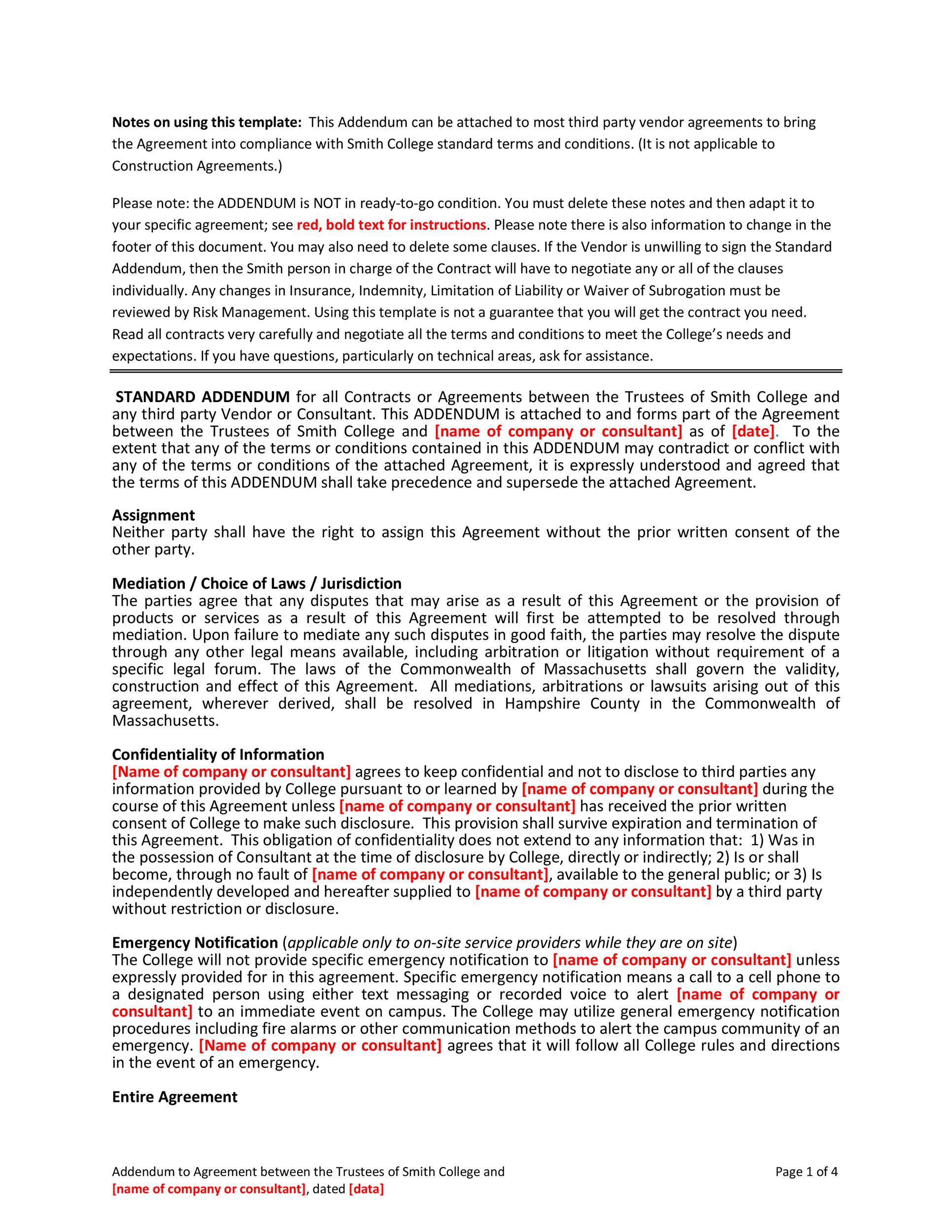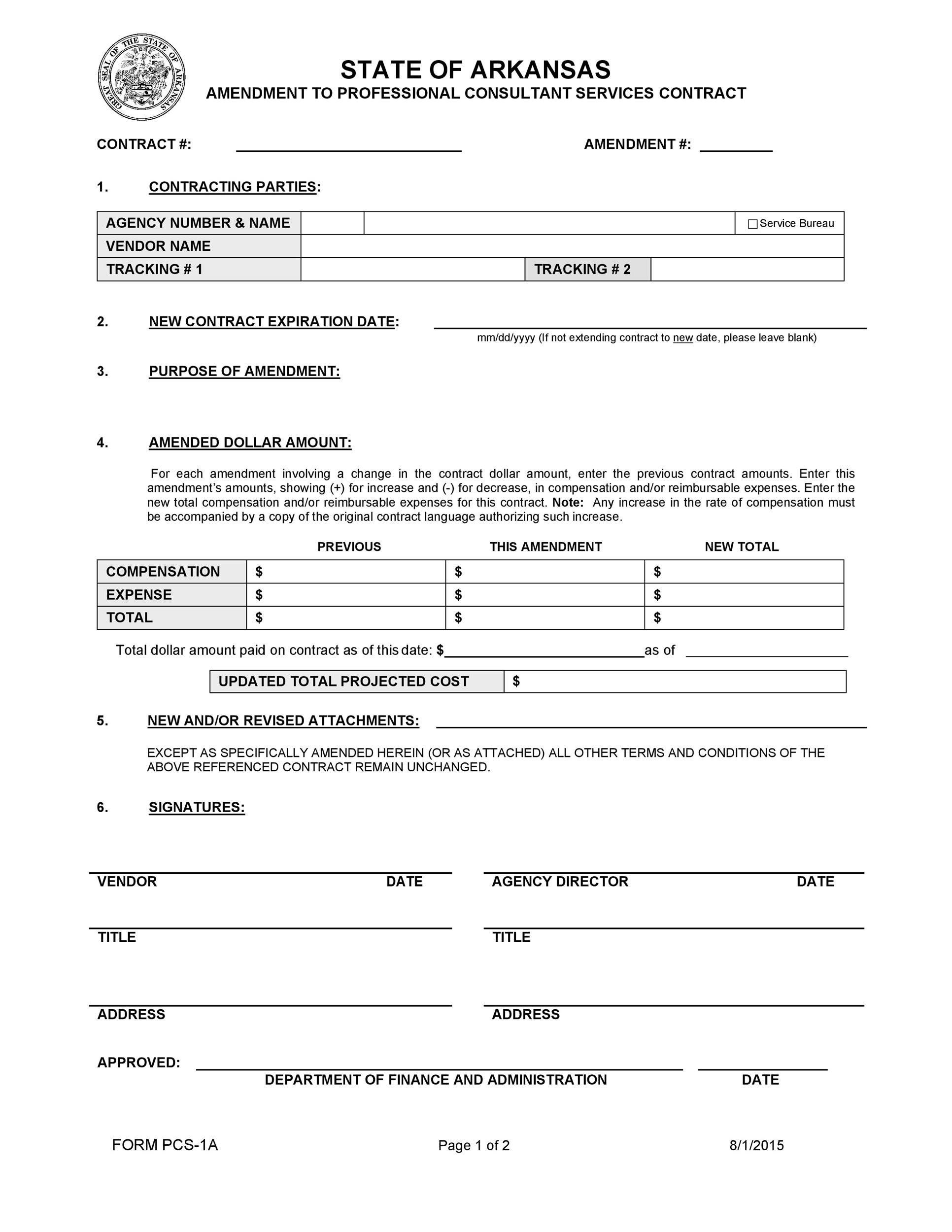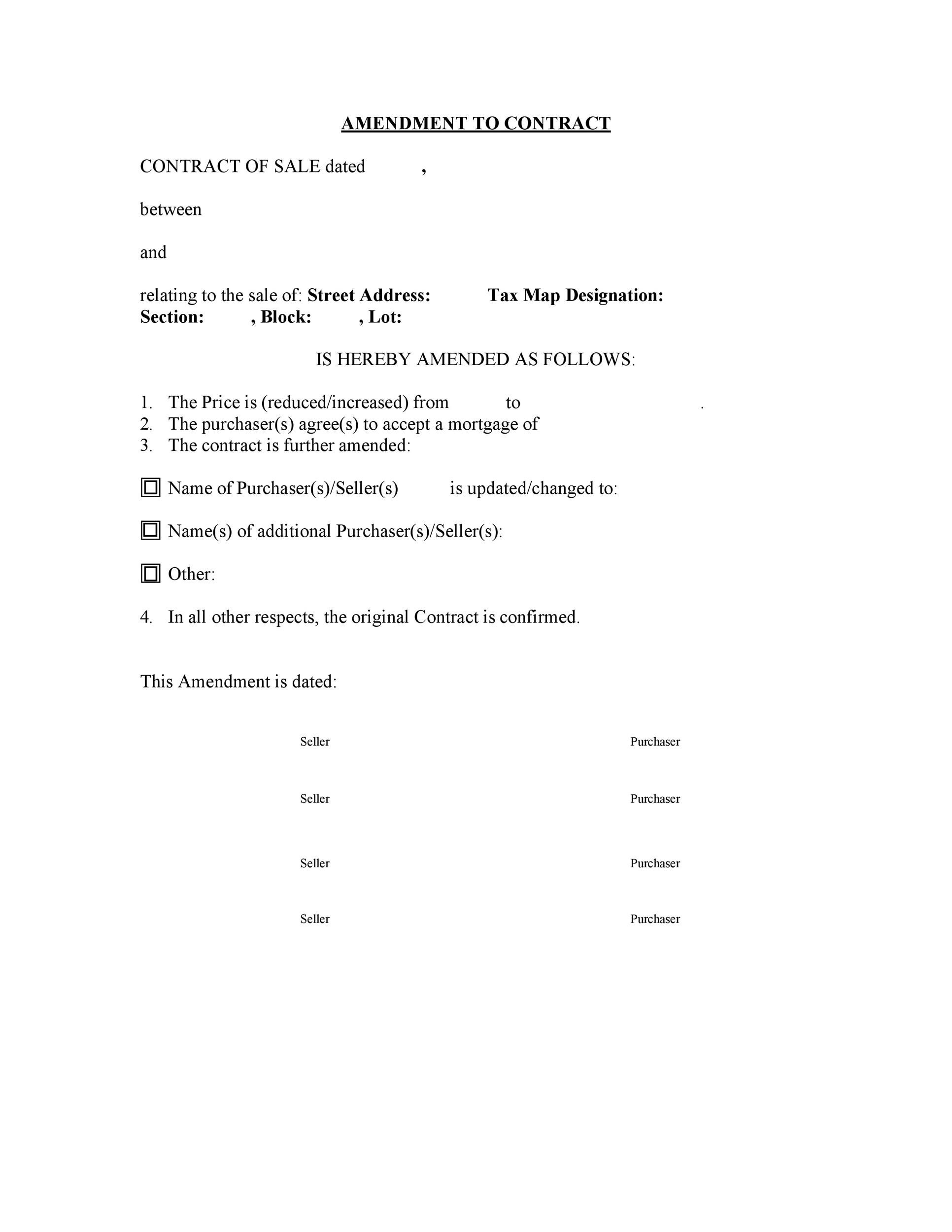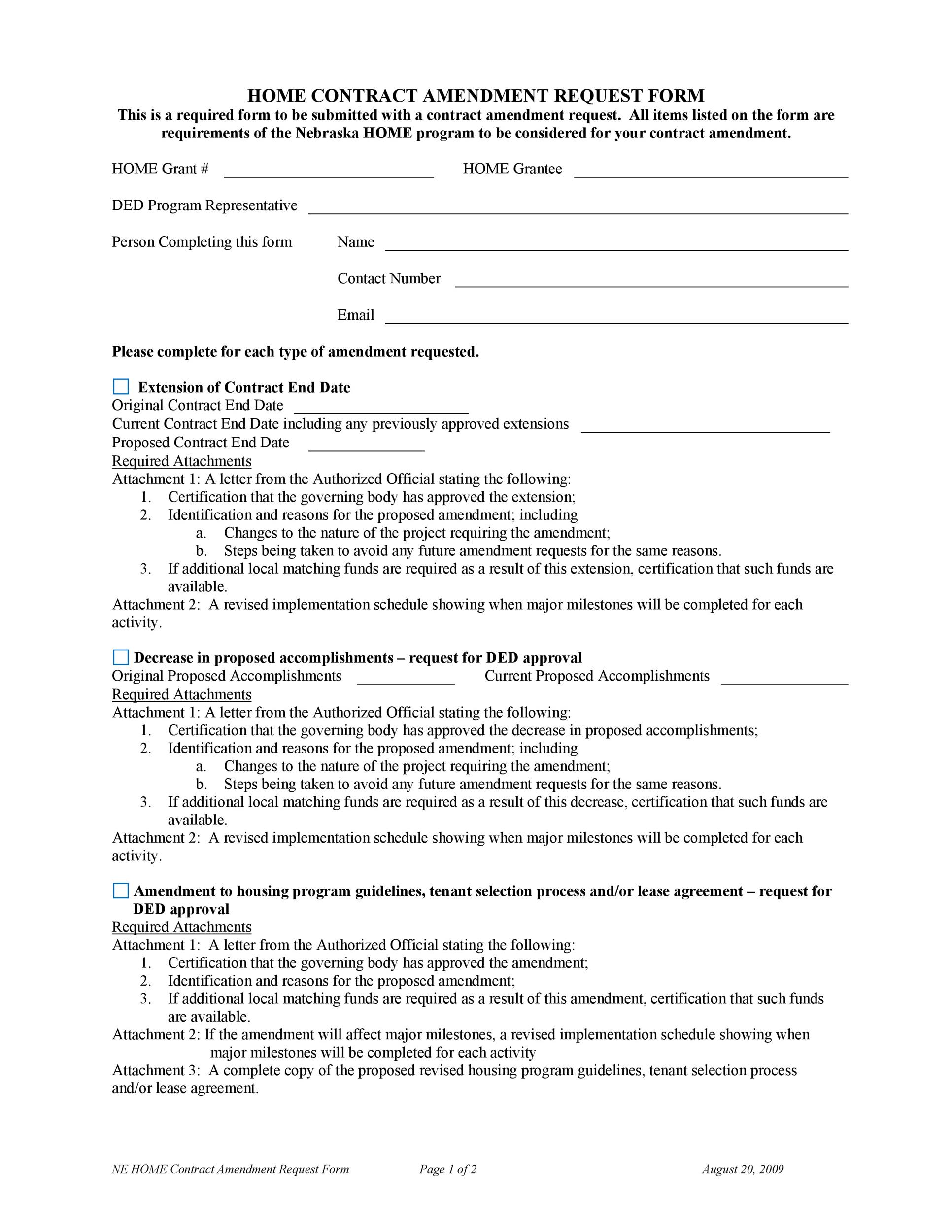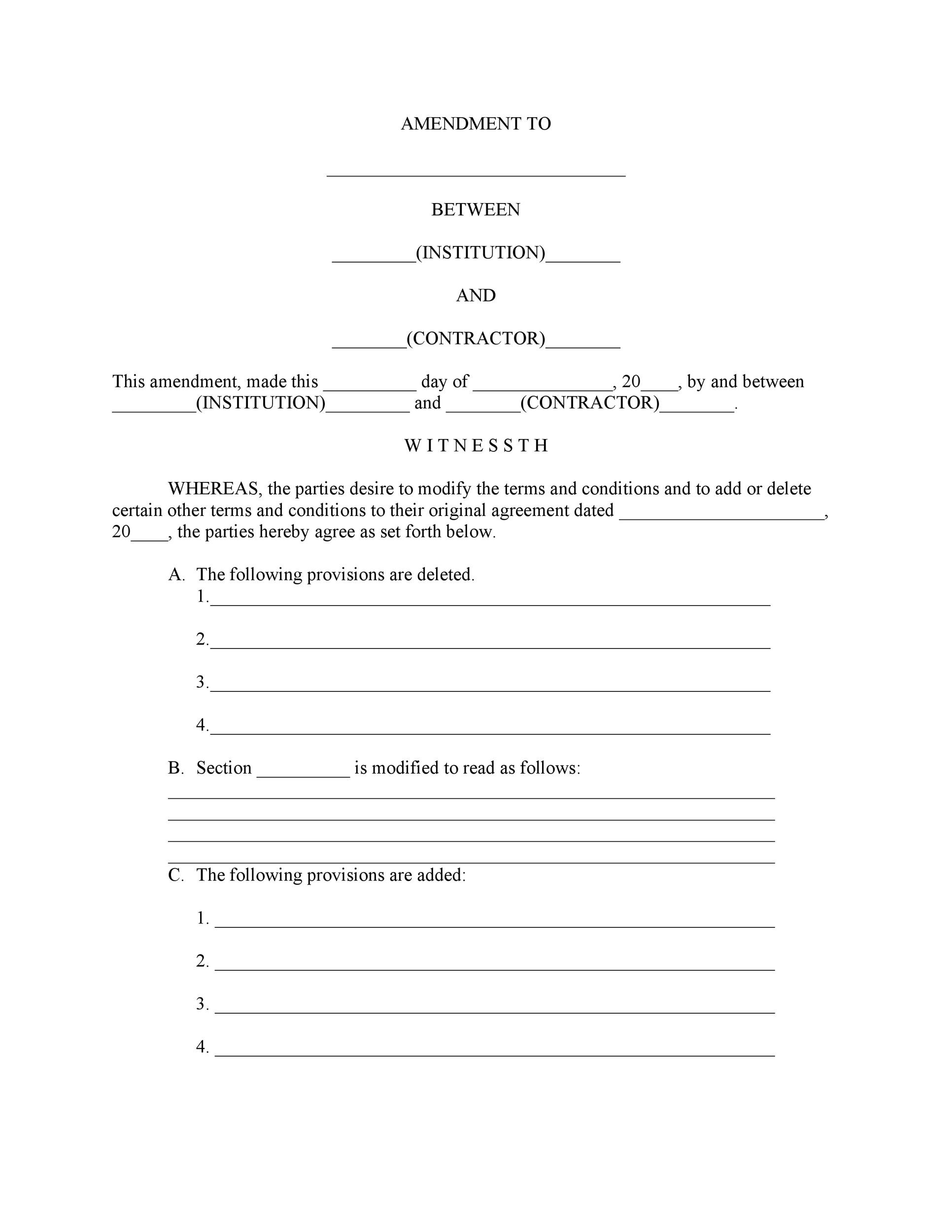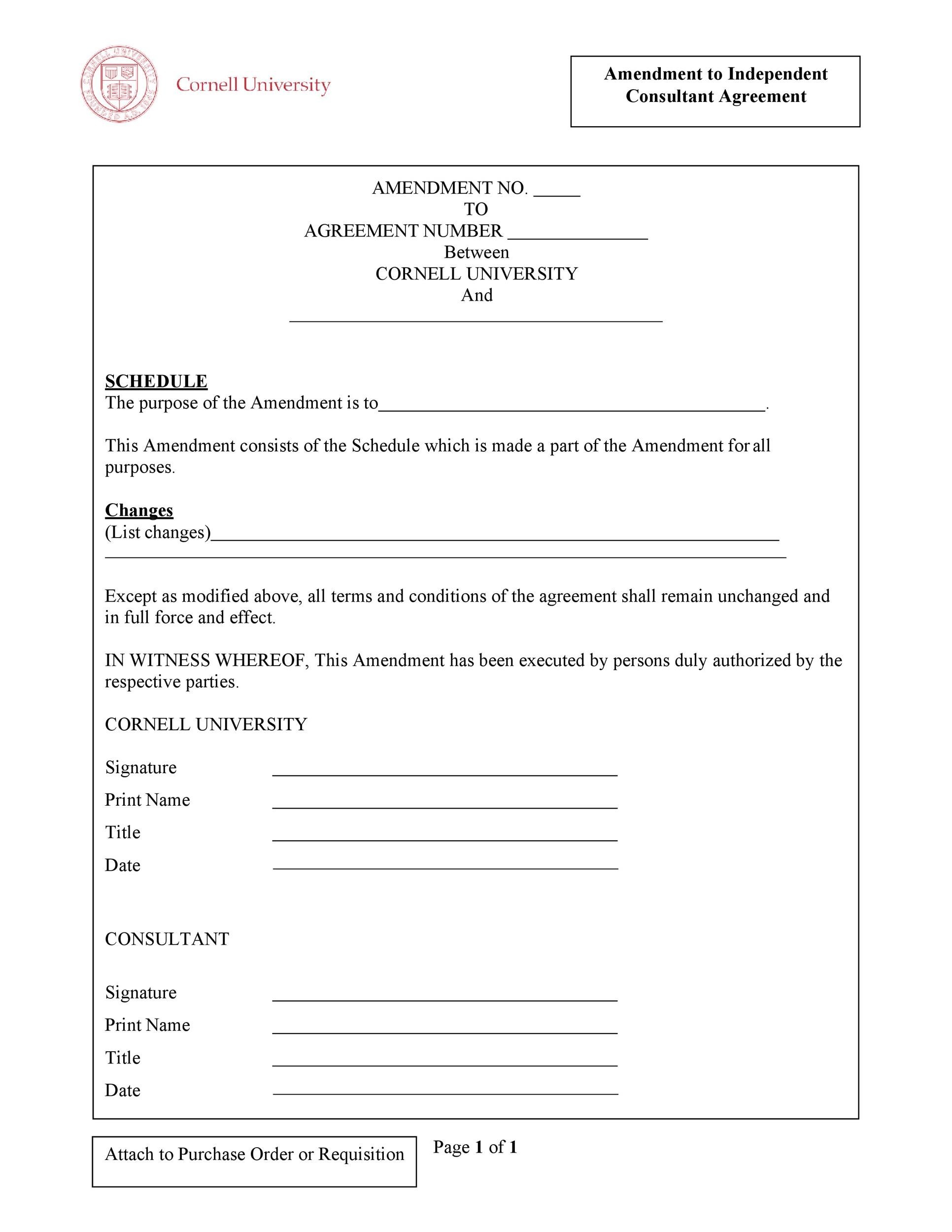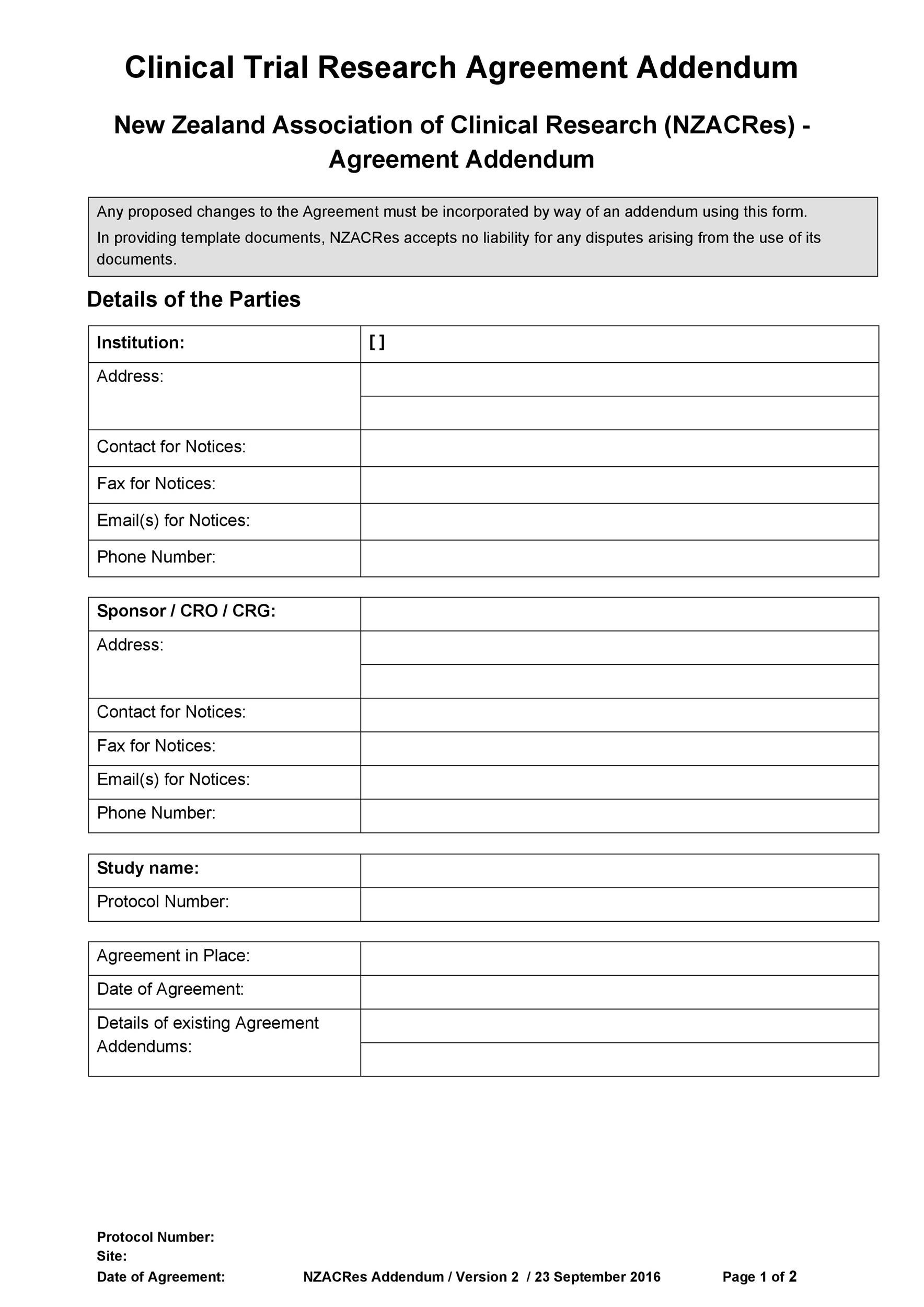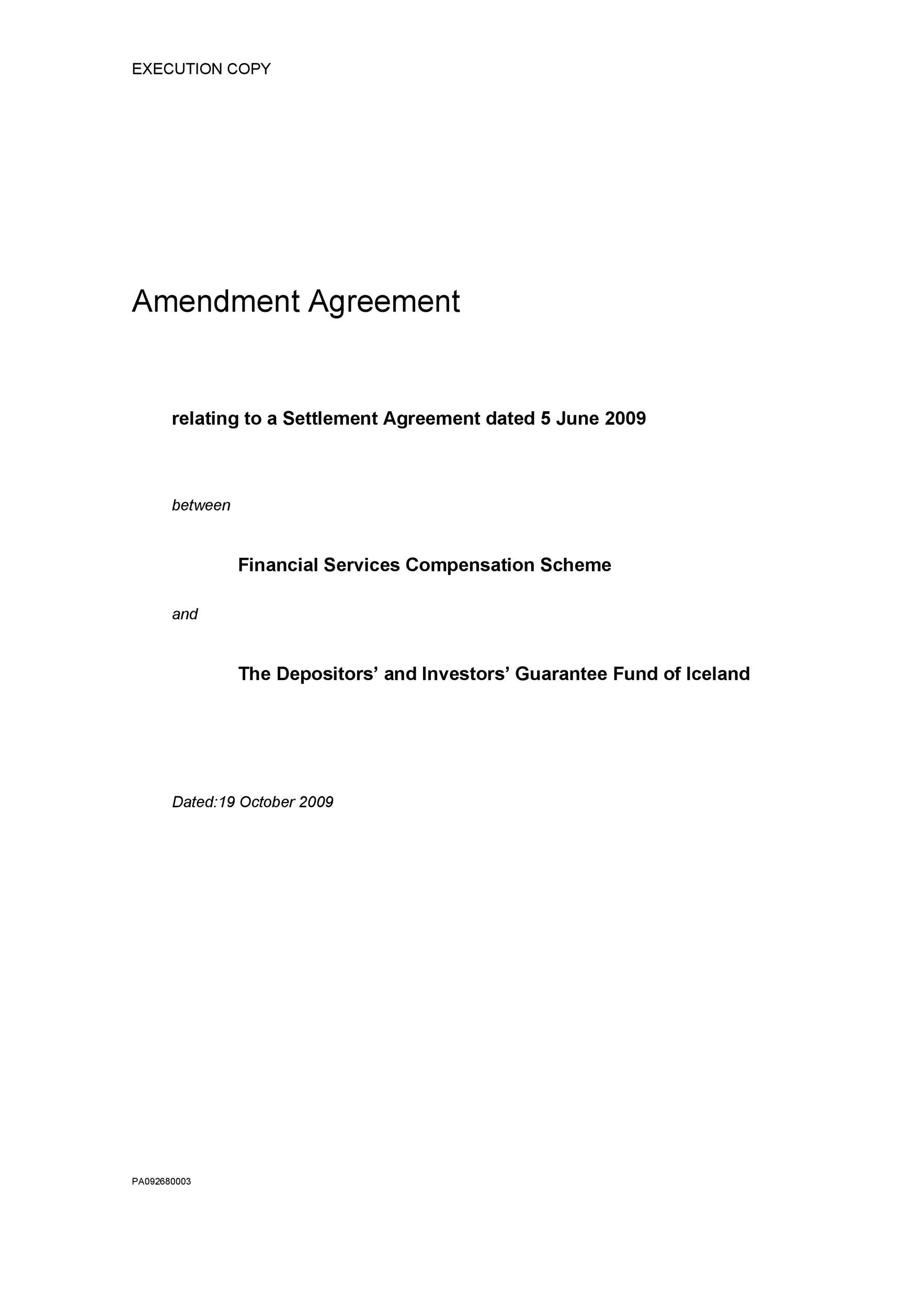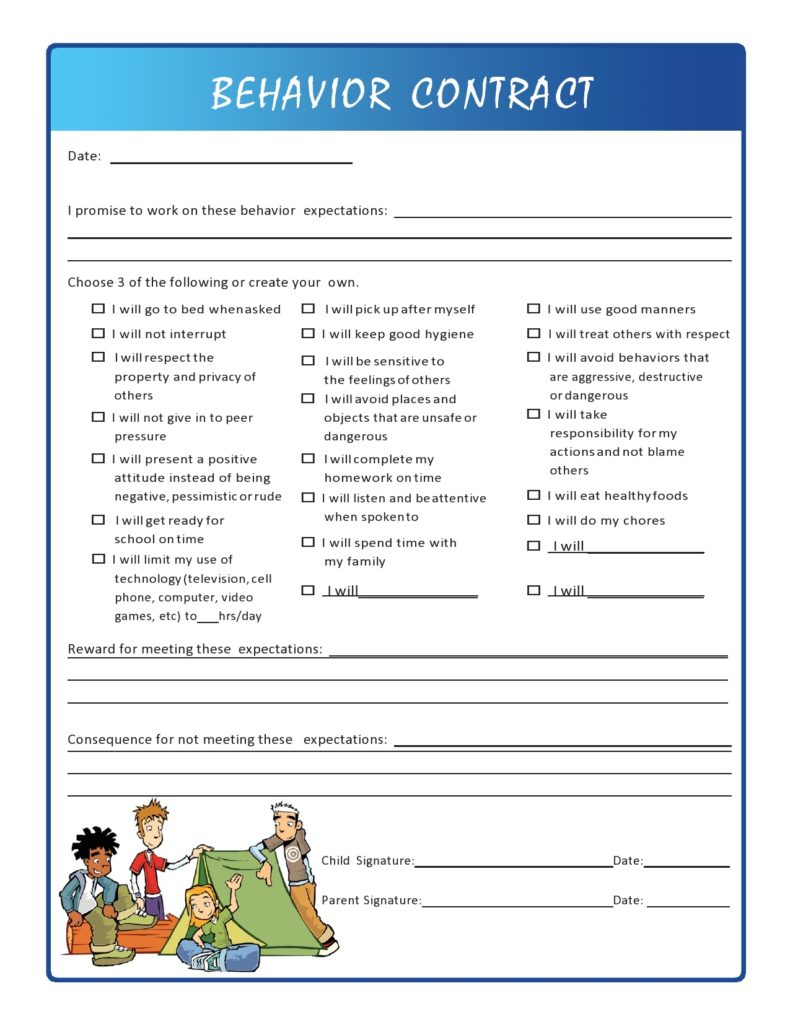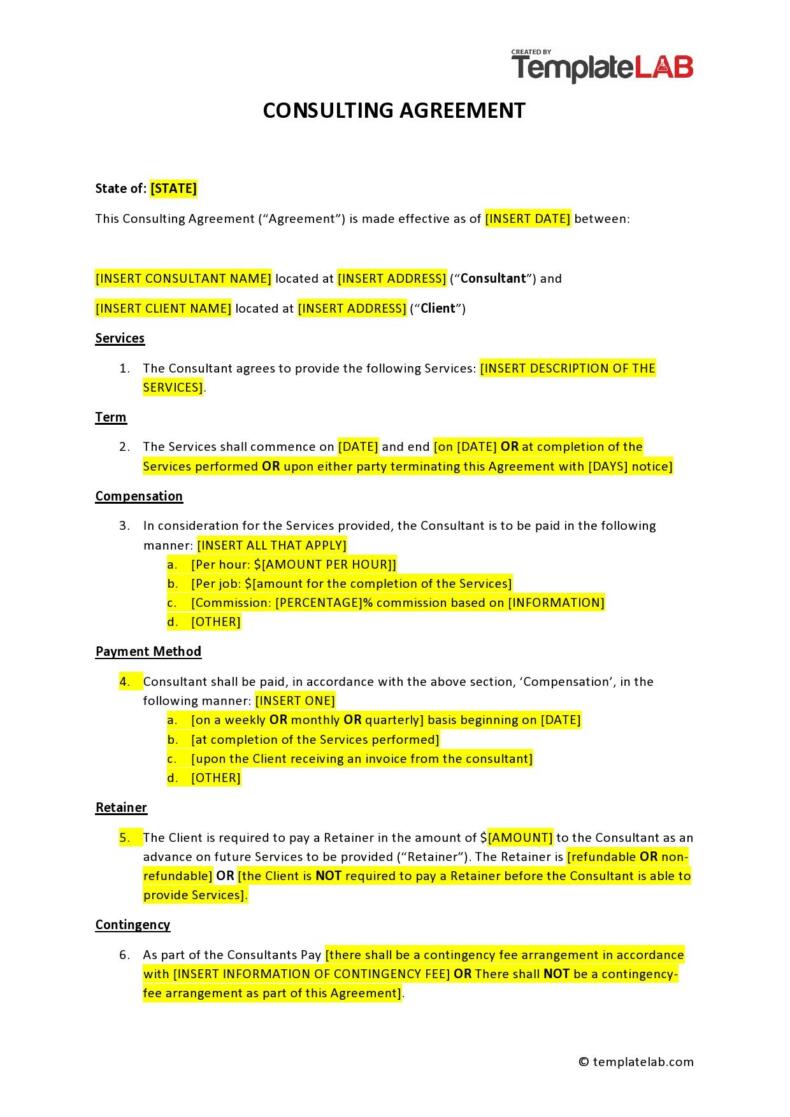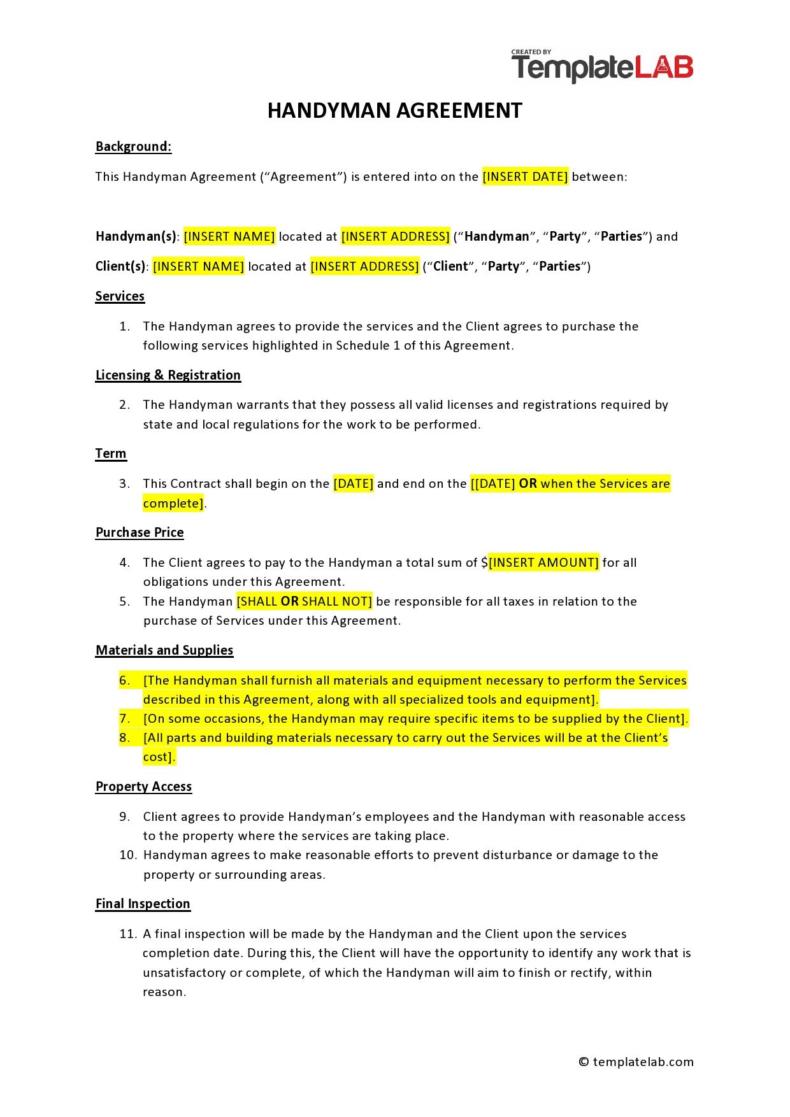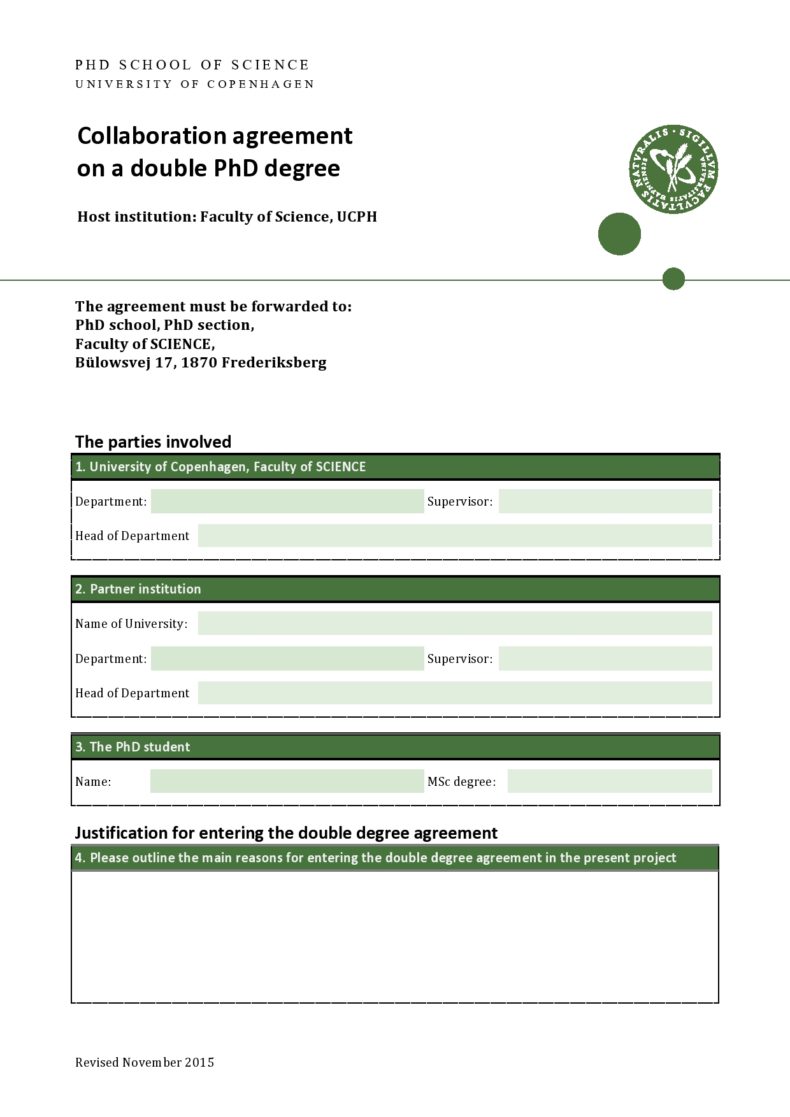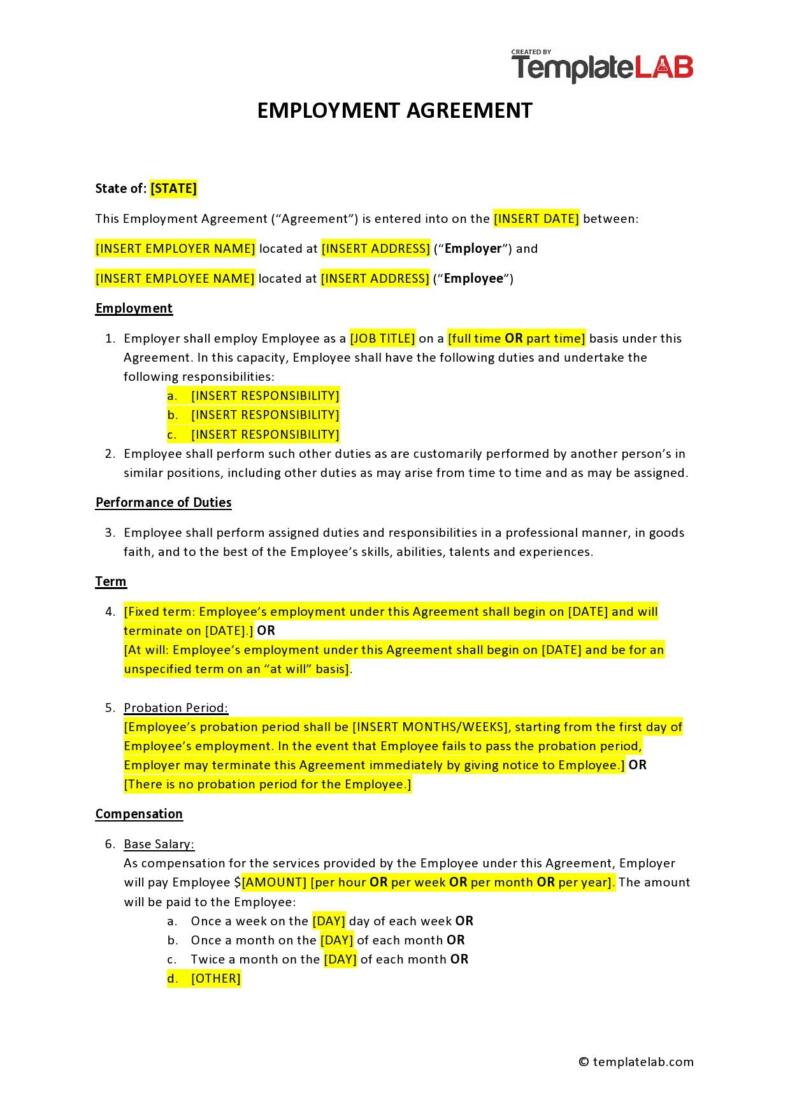A contract is a written agreement between two parties where each has an obligation to follow its terms. There are, however, inevitable circumstances where the contract needs an adjustment to suit the needs of both parties. If all parties agree to the changes, there may be no need to draft a new contract from scratch. Instead, you may use a contract amendment.
Table of Contents
Contract Amendment Templates
Keep these things in mind when making a contract amendment
To change the terms of a contract, there’s a need for a contract amendment. Modifying can mean adding to, deleting from, correcting or making some other changes to the original contract. Here are a few points to consider when creating a contract amendment:
- Several amendments to an existing contract aren’t recommended, especially if they amend prior amendments. In lieu of this, you may come up with a single amendment which restates and invalidates all of the prior amendments.
- Restating the whole paragraph or provision of the contract that’s under changes is better than just adding, changing or deleting a part of it.
- Remember to date the contract amendment upon its completion and make sure that it’s signed by the ones who also affixed their signatures to the original contract. Give copies to the parties concerned and to everyone who held a copy of the original contract.
Contract Amendment Samples
Methods for creating a contract amendment
When creating a contract amendment or a contract addendum template, make sure that the language is clear, concise, and specific. With regards to its form, the document can either be informal like a letter or you can also make use the same format in the original contract. Generally, there are three different styles to use in creating this document:
- Method 1:
Changes in the original contract are visually shown with the use of redlines and strikethroughs. For instance, an addition to the contract gets signified with an underline and deleted texts get crossed out using a strikethrough option. You can do this with a word processing application.
For those in the know, it’s a standard practice, before going to the amendment proper, to include a clarifying statement which describes the process used to draft the amendment. This makes clear that you will indicate additions using underlines or deletions using strikethroughs. After this, notice the section which you modified. - Method 2:
If you need to replace a clause completely, simply state which clause then add the new clause in its place. - Method 3:
This method requires a description of the portion of the amendment that’s the subject of change. This type can save a lot of valuable time. However, the parties to the contract need to verify the changes made to the original contract.
Addendum vs Amendment
Tips for creating a contract amendment
In general, contracts are considered consequence-imposing and rigid documents which require strict compliance from the parties involved. While it’s true that a contract creates legally binding obligations the parties must perform in a specific manner, you can still write them in a way that’s completely inflexible. This is still legal and allows both parties to make changes in a contract when necessary without causing unwanted issues.
Bear in mind that addendum templates and contract amendments are just as significant as the original contract itself in the sense that it changes the nature or meaning of the original agreement. Consider the following things when making this document:
- As much as possible, avoid using strikethroughs and insertions
What better and easier way to make a contract amendment than to use strikethroughs on language that you’re changing and insertion of language that reflects the desired change. Although this is one of the ways to create the amendment, it’s not the best way to go. This can be good for short contracts dealing where only minor details need changing but is never recommended for complicated agreements.
If possible, you must avoid this amendment method, especially if you need to make a lot of changes. This makes the contract difficult to read and might render the changes made to interpretations. Too many strikethroughs and insertion can cause some difficulties in understanding the substance of the amendments. - Draft a document entitled “amendment”
For the benefit of both parties, it’s recommended to draft a comprehensive document that contains the changes to make in the original contract. An appropriate name for this document is “Amendment.” Make it very clear in the document which contract you’re changing.
There is really not much difference in making the original contract and making the contract amendment because the parties still have to agree on the changes to make, especially on the wording that you will use to clarify such changes. - Clarify which section you’re revising
You can easily discern if a contract was well-written and this shows in the way you organize the paragraphs, subparagraphs, sections, and subsections. Even with the more complicated contracts, referencing a well-written contract for details will still be a lot easier. An organized contract makes it easier to locate the different parts of the contract. This is very important when it comes to the amending of a contract. - Be very specific
As important as locating the specific section to amend in a contract is the amended language to use. Make sure that it’s clear and specific. Location refers to the form but the language refers to the substance. If one of the sentences, for instance, should undergo a revision, identify it first. Then the amendment must show the new sentence completely.
It’s not enough to say that you should replace this or that word with another word. The amendment should be the complete sentence that you need to change followed by a statement which says something like “is hereby being replaced with” and this continues with the re-written sentence.
Let’s have an example which demonstrates the importance of being specific: This is an amendment which relates to a modification in the schedule of delivery. This provision is found in “section II, subsection C, paragraph vii, subparagraph d” and this reads: “Each shipment will be delivered every fifteenth day of the month.”
In the amendment, this gets replaced by “Each shipment will be delivered every twentieth day of the month.” This is a good example of specifying both the exact section and the exact language as well as writing the new version of the provision completely. With contracts and amendments, there should be no room for interpretations or errors. - Signature and initial
When both parties have agreed upon the final version of the amendment you’re proposing, they have to sign the document to place it into effect. After this, they can disseminate the final version to all of the concerned parties then add this to the original contract. As aforementioned, this amendment is as important as the original contract itself as it still requires the agreement of both parties to become effective.
Amendment to Contract
How does an amendment differ from an addendum?
If you are familiar with an amendment, how about the term addendum? Some may feel confused as to which or even if addendum vs amendment means the same thing. Let’s discuss the differences between addendum vs amendment further.
An amendment refers to a change or an alteration since it modifies an original document. Also, this document may include some supplementary information. Conversely, an addendum refers to explanatory or informational notes which you add to and which become part of the original contract. Their admission still needs the concurrence of the parties involved. An addendum template is an additional material that got omitted when the contract was first drafted.
Only the parties who affixed their signatures on the original contract can make amendments to the said contract. But for addendum to contract, anyone can create this other than those who signed the original contract. When the parties sign the amendments, they become part of the contract until it’s renegotiated. But an addendum to contract is a binding and legal part of the original contract.
Whenever an addendum template gets executed, it’s recommended to write a note above the signatures of the contract to give a notice that there is an addendum. This alerts anyone who’s reading the original contract that there are addendums attached to it.
Written amendment templates have more advantages than oral agreements. But even if a contract has a clause which requires the writing of any modifications for them to become valid, they’re not always compulsory. Contracts may not get enforced even if they have a clause but this does not mean that you should prohibit any oral amendments which require adding clauses or written modifications.
There can also be situations when the parties involved in the contract decide to deviate from their agreement but don’t want to make modifications to the agreement. This can happen, for instance, when one party grants permission to the other to share any information with other parties other than themselves, even when the language of the contract specifically prohibits such action.
You may consider the granting of permission or the waiving of a provision an amendment, although it’s more often referred to as a “waiver” or a “consent.” While an amendment makes changes to the agreement, a waiver or consent permits this action to happen even if it’s prohibited by the contract. It is, therefore, important as well as recommended to put a waiver or consent in writing.

